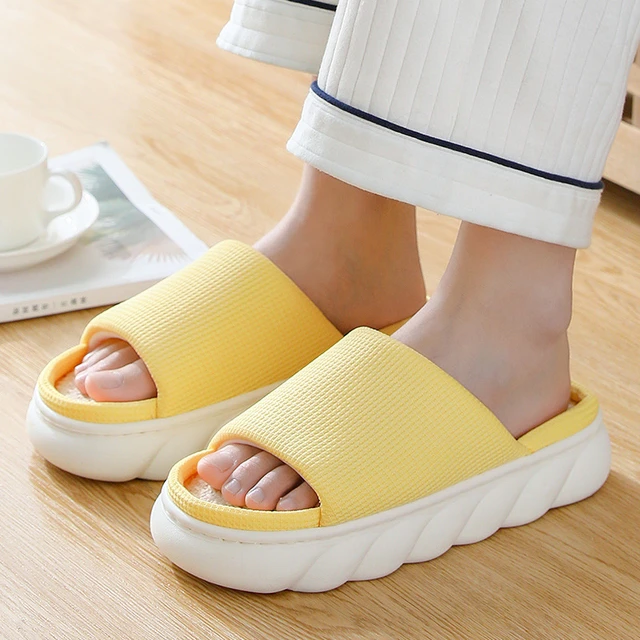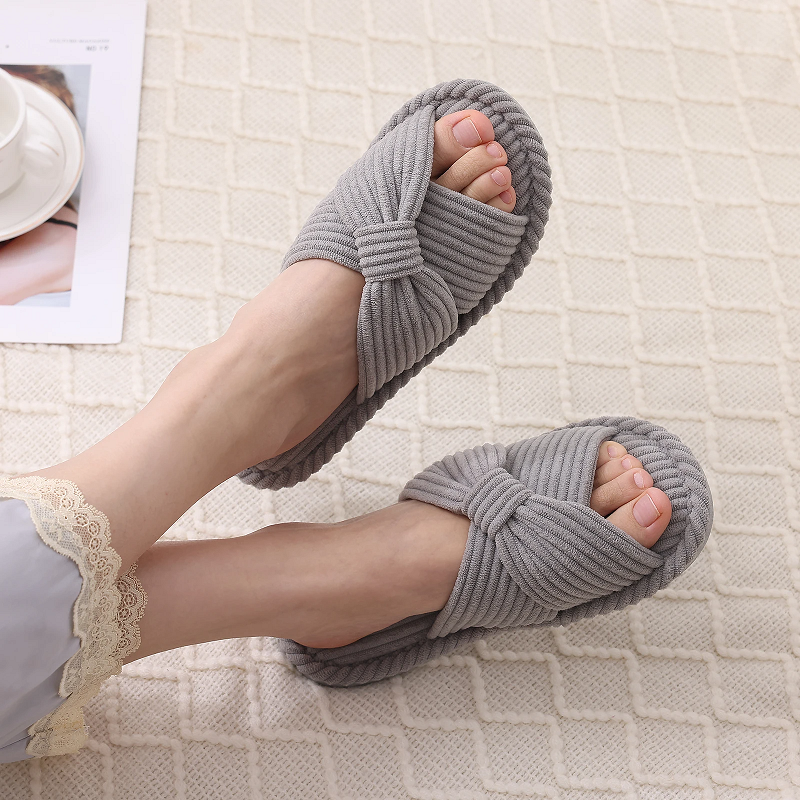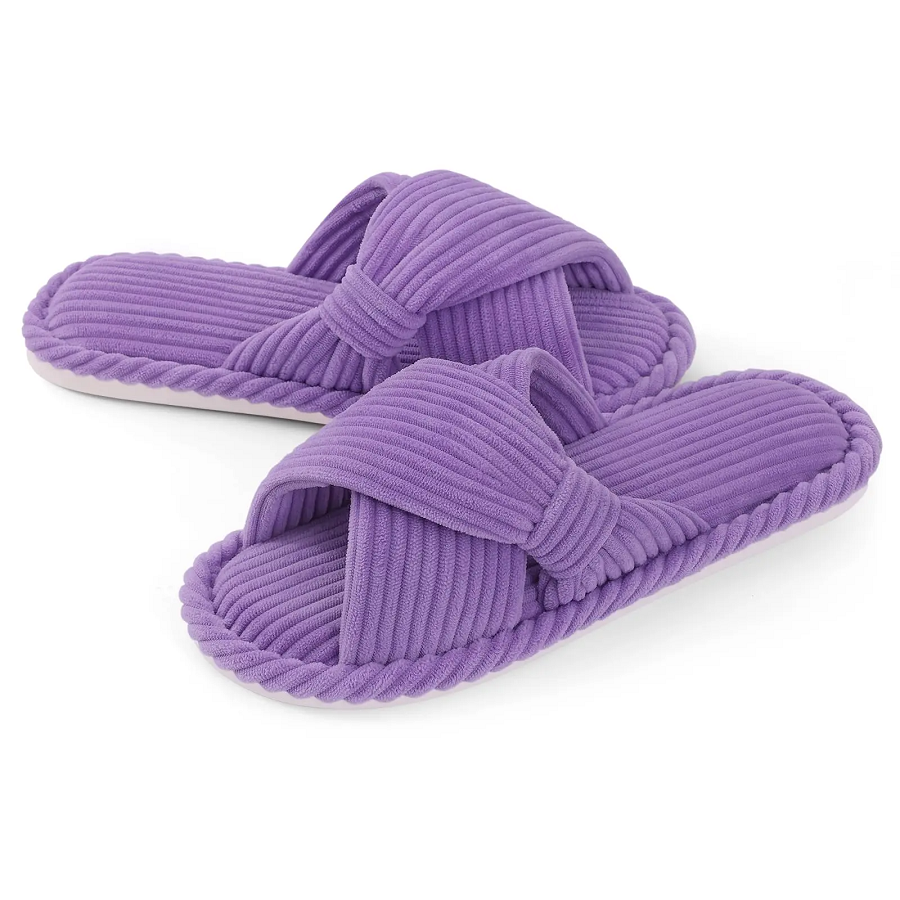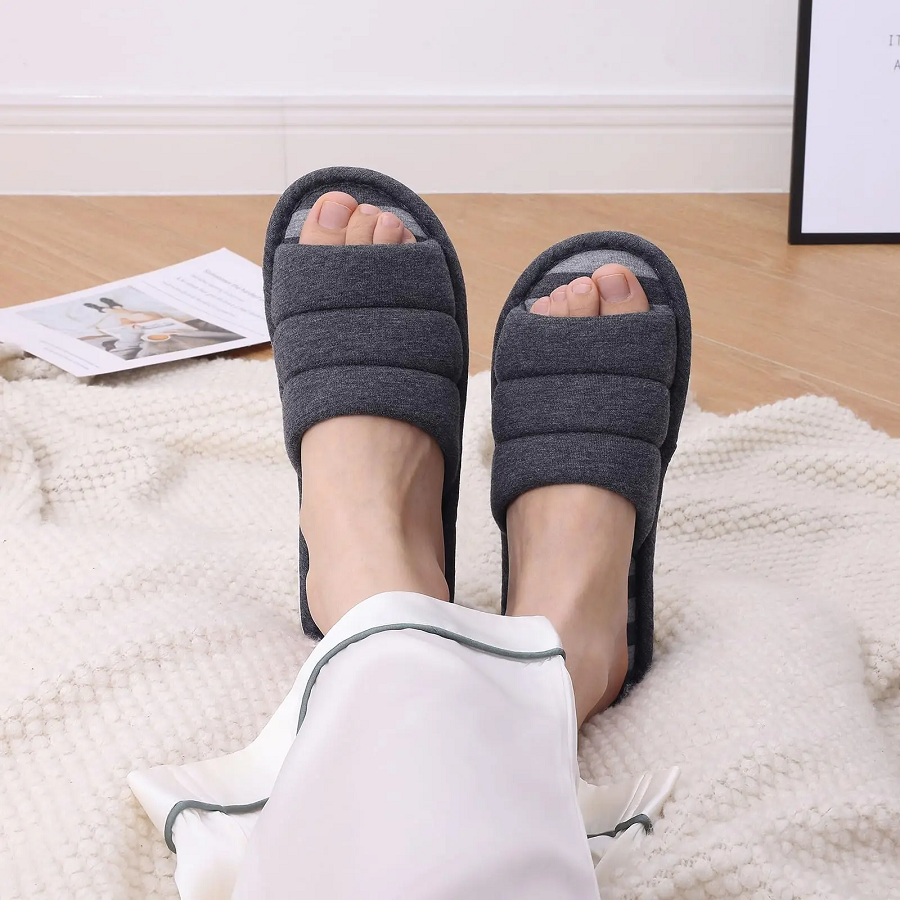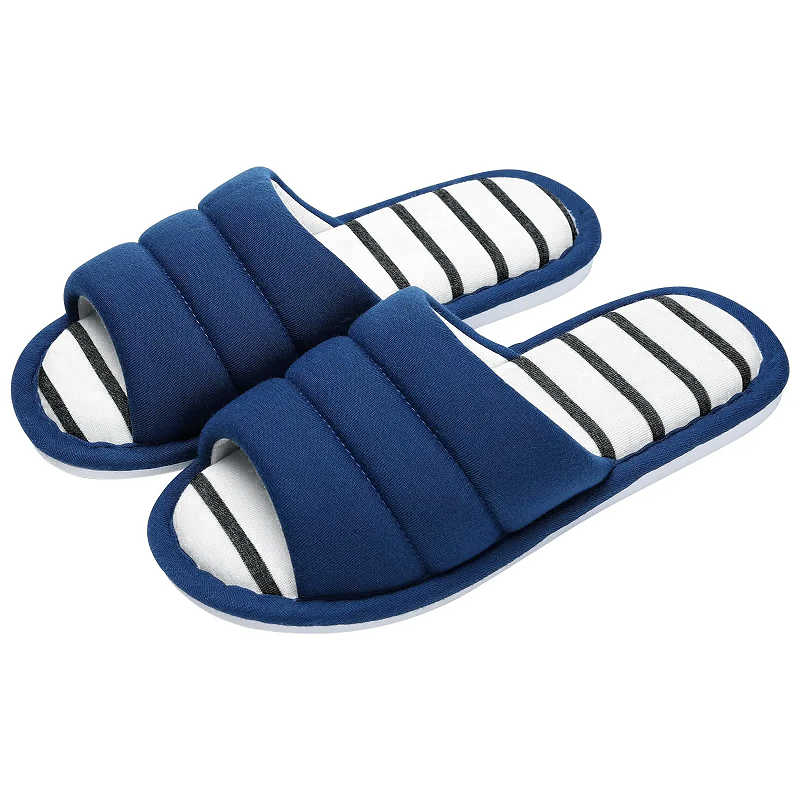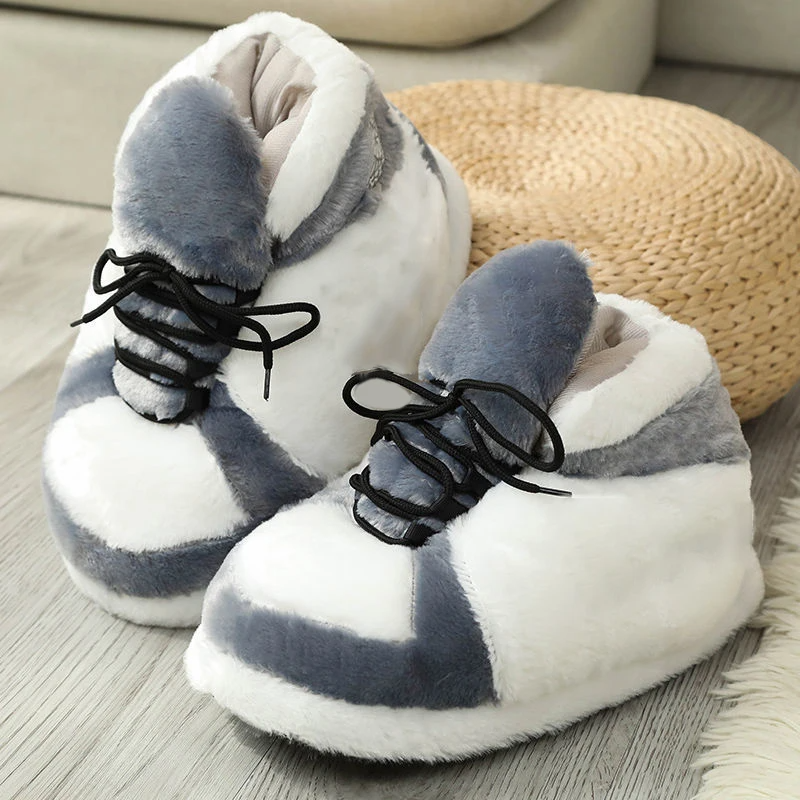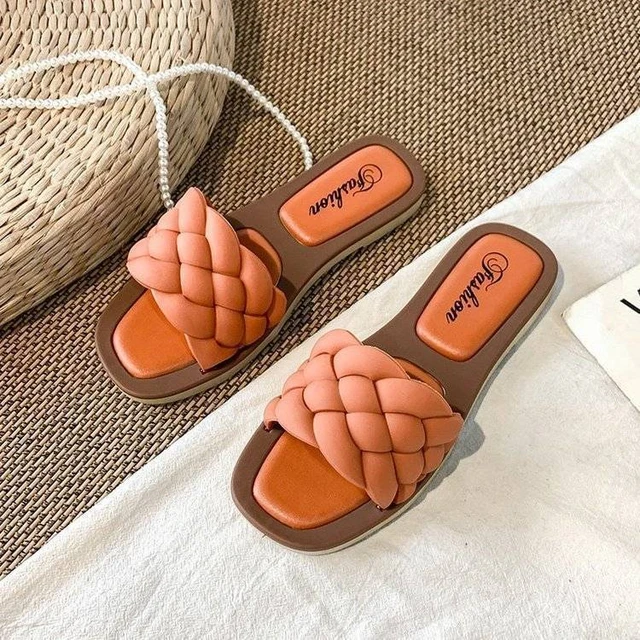
Can Dearfoam slippers go in the dryer?
When you invest in a pair of Dearfoam slippers, you expect them to provide comfort and durability. But can you wash dearfoam slippers? and what happens when they get dirty? These questions often arises: can Dearfoam slippers go in the dryer? This article will delve deep into how to care for these slippers and the do’s and don’ts of drying them.
The Anatomy of Dearfoam Slippers
Dearfoam slippers are renowned for their comfort and quality. These slippers typically feature soft lining, breathable materials, and cushioned insoles, making them highly appealing to people who value comfort at home. Understanding the materials used in these slippers is essential to determine the best care practices.
Materials Used in Dearfoam Slippers
Most Dearfoam slippers are crafted from a blend of synthetic and natural fibers. Common materials include microfiber, memory foam, terry cloth, and faux fur. The soles are generally made of rubber or synthetic compounds designed for durability and anti-slip properties. This mixture of materials makes the slippers versatile but also raises questions about suitable cleaning methods.
Why Material Matters
The varied composition of Dearfoam slippers lends to their unique comfort features. Memory foam, for example, molds to the shape of your foot, while terry cloth helps keep your feet cool and dry. However, these materials can react differently to washing and drying processes. Therefore, understanding the materials is the first step in formulating appropriate care guidelines.
Cleaning Dearfoam Slippers: A Step-by-Step Guide
Before diving into the drying aspect, it’s essential to discuss how to properly clean Dearfoam slippers. Ensuring that your slippers are clean will maintain their longevity and comfort.
Hand-Washing Techniques
One of the safest methods to clean Dearfoam slippers is hand-washing. Fill a basin with lukewarm water and add a small amount of mild detergent. Immerse the slippers in the water, gently scrubbing any dirty areas with a soft brush or cloth. Rinse thoroughly to remove any soap residue and squeeze out the excess water gently, but don’t wring them out as this can ruin the shape.
Machine Washing Guidelines
While hand-washing is the safest bet, some Dearfoam slippers can be machine washed. Before you do so, consult the care label for specific washing instructions. Use a mesh laundry bag to protect the slippers’ shape and color. Set the machine to a delicate cycle with cold water and a mild detergent. Avoid using bleach or harsh cleaners, as these can damage the slippers’ materials.
The Dryer Dilemma: Can Dearfoam Slippers Go In?
Now, let’s come to the burning question: can Dearfoam slippers go in the dryer? The short answer is generally no, but it depends on various factors, including materials and manufacturer guidelines.
Manufacturer’s Recommendations
Always look at the care label on your Dearfoam slippers. Manufacturers often provide specific cleaning and drying instructions. Most commonly, Dearfoam advises against putting the slippers in the dryer. High heat can shrink synthetic fibers, deform memory foam, and compromise the slipper’s overall structure.
Risks of Using a Dryer
Putting Dearfoam slippers in the dryer can lead to multiple issues. The high heat and tumbling action can cause:
- Material Degradation: The synthetic blends may break down under intense heat, reducing the lifespan of your slippers.
- Loss of Shape: Memory foam insoles can become misshapen, affecting the fit and comfort of your slippers.
- Shrinkage: Materials like microfiber and terry cloth can shrink, making your slippers too tight or uncomfortable to wear.
- Damage to Rubber Soles: The heat can cause rubber soles to crack or become brittle, compromising their anti-slip properties.
Alternative Drying Methods
Since the dryer is out of the question, you’ll need to consider alternative methods to dry your Dearfoam slippers effectively.
Air Drying: The Preferred Method
Air drying is the safest and most recommended method for drying Dearfoam slippers. After washing, lay the slippers flat on a clean, dry towel. Roll the towel to remove excess water gently and unroll it. Reshape the slippers if necessary and place them in a well-ventilated area away from direct sunlight and heat sources. Allow them to dry naturally, which may take a few hours to a couple of days, depending on the thickness of the materials.
Using a Fan or Dehumidifier
If you’re in a hurry, you can speed up the drying process with a fan or dehumidifier. Position the slippers near a fan, ensuring not to place them too close to avoid damage. A dehumidifier in the room can also help absorb excess moisture, making the slippers dry faster. However, avoid direct airflow onto the slippers, as this can lead to uneven drying.
Pro Tips for Maintaining Your Dearfoam Slippers
Keeping your Dearfoam slippers clean and comfortable isn’t just about knowing how to wash and dry them. Here are some additional tips to extend the life of your beloved footwear.
Rotate Usage
If you have more than one pair of slippers, try rotating them. Constant use of a single pair can lead to quicker wear and tear. Rotating allows each pair to rest and return to shape.
Use Fabric Fresheners
Another way to keep your Dearfoam slippers fresh is by using fabric fresheners or sprays. These products can neutralize odors and keep the material smelling clean without frequent washes.
Store Properly
When not in use, store your slippers in a cool, dry place. Avoid leaving them in damp or humid environments, which can encourage mold and mildew growth, compromising the material’s integrity.
Common Myths and Misconceptions
When it comes to household items like slippers, numerous myths and misconceptions abound. Many of these myths stem from misunderstandings or generalizations about product care and maintenance. Dearfoam slippers are no exception. As beloved as they are for their comfort and quality, misinformation can lead to improper care, ultimately reducing their lifespan. Let’s take a closer look at some common myths and misconceptions surrounding the care of Dearfoam slippers.
Myth 1: Machine Washing is Always Safe
One common myth is that machine washing is always a safe and effective method for cleaning Dearfoam slippers. The convenience of tossing them into the machine and letting it do all the work is alluring, but this can be misleading.
Reality Check
While some Dearfoam slippers can indeed be machine-washed, it’s not a one-size-fits-all solution. Machine washing can be harsh, especially on delicate materials like memory foam or faux fur. Always refer to the care label on your specific pair of slippers for washing recommendations. Hand-washing these slippers is often a safer method, as it gives you more control over how much wear and tear they endure during the cleaning process.
Myth 2: High Heat is Necessary to Kill Germs
Another prevalent misconception is the belief that high heat is essential to kill germs and thoroughly sanitize slippers. This idea often tempts people to put their slippers in the dryer on high settings.
Reality Check
High heat can indeed kill germs, but it can also severely damage the materials in Dearfoam slippers. Heating synthetic fabrics and memory foam can cause shrinkage, deformation, and even material breakdown. Opt for air-drying methods, coupled with proper washing techniques using appropriate detergents to ensure cleanliness without exposing the materials to destructive high temperatures.
Myth 3: Fabric Softener Enhances Comfort
Using fabric softener is another commonly held belief aimed at enhancing the softness and comfort of Dearfoam slippers. While it may seem like a good idea, especially if the goal is to maintain that plush, comfortable feel, it’s not always beneficial.
Reality Check
Fabric softener can leave a residue that builds up over time and actually reduce the effectiveness of moisture-wicking materials. This is particularly problematic for slippers, which are designed to keep your feet dry. Instead of using fabric softeners, consider using mild detergents specifically formulated for delicate fabrics. This helps maintain the integrity and comfort without the side effect of residue buildup.
Myth 4: Quick Drying is Best
Many people are under the impression that the quicker their slippers dry, the better. Using a dryer on a high heat setting or placing them in direct sunlight are often seen as viable options for speeding up the drying process.
Reality Check
While quick drying methods can be tempting, they are usually detrimental to the longevity of your slippers. High heat can cause materials like memory foam to lose their shape and can also degrade synthetic fibers. Direct sunlight can fade colors and make some parts of the material brittle. Air-drying in a well-ventilated, shaded area is the best way to ensure that your slippers retain their shape, color, and comfort.
Myth 5: All Dearfoam Slippers are Machine Washable
There’s a pervasive belief that all Dearfoam slippers can be thrown into the washing machine without any issues. This misconception likely arises because of generalized experiences with other types of footwear or a misunderstanding of the various materials used in Dearfoam slippers.
Reality Check
The care label is your best friend when it comes to determining whether or not your Dearfoam slippers can be machine washed. While some may be safe for machine washing, others, especially those with delicate linings or specialty materials, are best cleaned by hand. A quick check of the label can prevent unnecessary damage and protect your slippers.
Myth 6: All Types of Cleaners are Safe to Use
Another common misconception is that any type of cleaner can be used to clean Dearfoam slippers, especially strong cleaners that promise to remove stubborn stains and odors.
Reality Check
Harsh chemicals or even bleach can significantly damage the materials in Dearfoam slippers. Instead, it’s essential to use mild detergents or cleaners specially formulated for delicate fabrics. These products will clean your slippers without causing material degradation or irritating your skin.
Myth 7: Storing Slippers is Not Important
Many people overlook the importance of properly storing their slippers. It’s often assumed that tossing them in a random corner or leaving them wherever you take them off is fine.
Reality Check
Improper storage can lead to mold, mildew, and a shortened lifespan for your Dearfoam slippers. Always store your slippers in a cool, dry place, away from direct sunlight and sources of moisture. This will help maintain the integrity and hygiene of your slippers, ensuring they last for a long time.
Navigating Through Myths
Understanding the common myths and misconceptions about the care and maintenance of Dearfoam slippers can significantly extend their lifespan and maintain their comfort. While the convenience of machine washing, quick drying, and using fabric softeners might be tempting, they often do more harm than good. Always refer to the care label for specific instructions and consider adopting gentler methods like hand-washing and air-drying.
Dearfoam slippers are a staple for comfort, and by debunking these myths, you can ensure that your slippers remain in excellent condition for as long as possible. Remember, better care leads to better comfort, making your investment in Dearfoam slippers truly worthwhile.
Conclusion: Better Safe Than Sorry
In conclusion, while Dearfoam slippers bring comfort and coziness to your home, they need special care to maintain their quality. Avoid putting your Dearfoam slippers in the dryer. The risks far outweigh the benefits, as heat can cause shrinkage, material degradation, and loss of shape. Opt for air drying or the use of fans and dehumidifiers for the best results. Always consult the manufacturer’s guidelines and take additional steps like rotating usage, using fabric fresheners, and proper storage to keep your slippers in top-notch condition. Taking these measures will ensure that your Dearfoam slippers provide lasting comfort and durability, making them an excellent investment in 2024 for your home life.

Should I size up or down in UGG tasman slippers?
UGG Tasman slippers are beloved for their comfort, warmth, and stylish design. In 2024, many people opt for these popular slippers due to their luxurious sheepskin lining and durable construction. However, finding the right size can be tricky. Sizing up or down is a common dilemma for many buyers. This guide aims to help you make an informed decision based on various factors, such as foot shape, sock preference, and personal comfort. Understanding these elements will ensure that you enjoy a perfect fit for your UGG Tasman slippers.
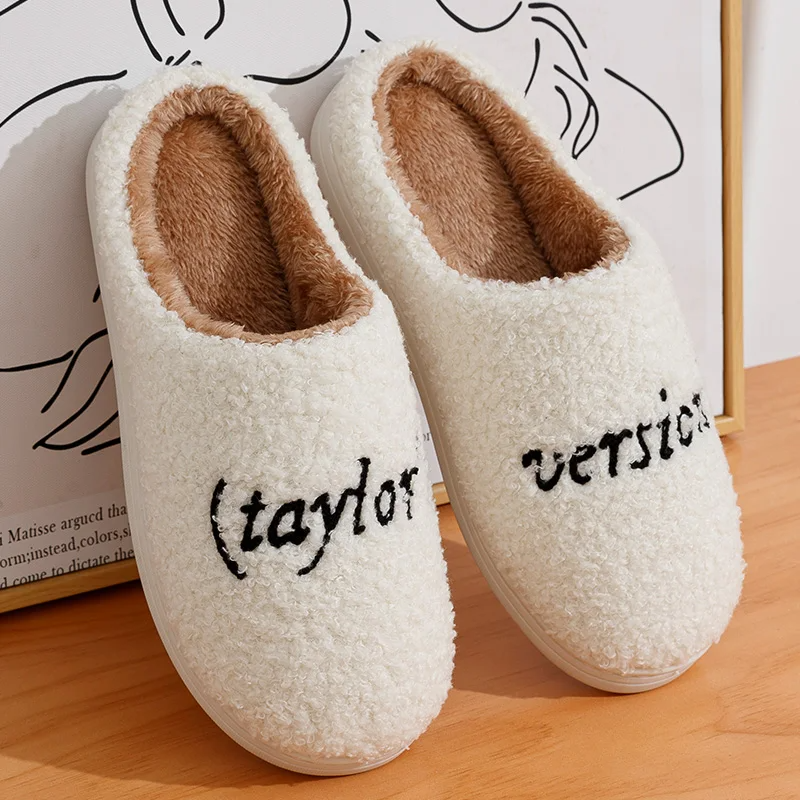
Understanding UGG Sizing
General Fit of UGG Tasman Slippers
UGG Tasman slippers usually run true to size. The snug fit initially comes from the thick shearling lining. This lining conforms to the shape of your foot over time. The slippers often feel tight at first but become more comfortable after breaking them in. It is essential to consider this break-in period when deciding on size.
When first wearing the slippers, you may find them somewhat tight. This tightness is normal and expected. The natural wool fibers will compress and mold to your feet as you wear them. Over time, the slippers should feel more comfortable and supportive.
However, individual experiences can vary. Some people may find their regular size too tight, while others may find it perfect. Foot shape and width play a significant role in this variability. It is vital to consider these factors to determine the best size for you.
Break-In Period
The break-in period for UGG Tasman slippers is typically short. You might notice a significant difference in the fit after just a few days of wear. The wool lining compresses and conforms to your foot’s shape, providing a custom fit. The slippers should feel more comfortable and less restrictive after this period.
During the break-in period, avoid wearing thick socks. Thick socks can make the slippers feel too tight and uncomfortable. Instead, wear regular or thin socks to allow the wool lining to adjust to your foot’s shape.
The break-in period can vary from person to person. Some people may find the slippers comfortable after just a day or two, while others may need a week or more. Be patient and give the slippers time to adjust to your feet.
Considering Foot Width
Narrow Feet
People with narrow feet usually find UGG Tasman slippers fit well in their regular size. The initial snugness can be uncomfortable, but the break-in period should resolve this. After the wool lining compresses, the slippers will have more room and feel more comfortable.
If you have narrow feet, you might not need to size up. Sizing up could result in a loose fit after the break-in period. The slippers might slip off your feet or feel too roomy.
When trying on the slippers for the first time, consider wearing regular or thin socks. This will give you a more accurate sense of the fit. Avoid wearing thick socks, as they can make the fit feel tighter than it is.
Wide Feet
People with wider feet may find their regular size too tight, even after breaking in the slippers. The wool lining compresses, but it might not provide enough room for wider feet. In such cases, sizing up by half a size could be a better option.
Sizing up can provide extra room and comfort, accommodating the width of your foot. The slippers will still conform to your feet, providing a custom fit. However, you may experience some initial tightness during the break-in period.
If you have wide feet, consider trying on the slippers with regular socks. This will give you a more accurate sense of the fit. If the slippers still feel too tight, sizing up by half a size is a good idea.
Considering Sock Thickness
Thick Socks
If you plan to wear thick socks with your UGG Tasman slippers, consider sizing up. Thick socks add bulk and can make the slippers feel tighter. Sizing up by half a size can provide extra room and ensure comfort.
Wearing thick socks can add warmth during colder months. However, the added bulk can make the slippers feel too tight and restrictive. Sizing up can resolve this issue and provide a more comfortable fit.
When trying on the slippers for the first time, wear the socks you plan to use regularly. This will give you a more accurate sense of the fit. If the slippers feel too tight with thick socks, consider sizing up.
Barefoot or Thin Socks
If you prefer to wear your slippers barefoot or with thin socks, sticking to your true size is generally advisable. The wool lining already provides ample warmth and cushioning. Wearing thin socks or going barefoot allows the wool to conform to your foot’s shape more quickly.
Wearing thin socks or going barefoot can also help reduce the break-in period. The wool lining will compress and mold to your foot’s shape, providing a custom fit. This can make the slippers feel more comfortable sooner.
When trying on the slippers for the first time, consider wearing thin socks or going barefoot. This will give you a more accurate sense of the fit. If the slippers feel too tight with thin socks or barefoot, consider whether they will loosen up after the break-in period.
Personal Comfort Preferences-Should I size up or down for ugg tasman slippers?
Extra Room
Some people prefer a bit of extra room in their slippers for added comfort. If you fall into this category, sizing up could be the best choice. The extra space allows for more flexibility and prevents the slippers from feeling overly snug.
Extra room can also accommodate variations in foot size and shape. Feet can swell slightly during the day, and having a bit of extra space can provide added comfort.
When trying on the slippers for the first time, consider how much extra room you prefer. If you like a looser fit, sizing up by half a size may be the best option. Remember that the wool lining will compress and provide some additional room over time.
Snug Fit
Others prefer a snug fit, especially considering the slippers will stretch slightly over time. In this case, sticking to your true size or even going down half a size (if between sizes) might be better. The snug fit will adjust over time, resulting in a personalized fit.
A snug fit can provide better support and prevent the slippers from slipping off. The wool lining will mold to your foot’s shape, providing a custom fit that is comfortable and supportive.
When trying on the slippers for the first time, consider how snug you prefer the fit. If you like a tighter fit, sticking to your true size or going down half a size may be the best option. Remember that the wool lining will compress and provide some additional room over time.
Special Considerations
Half Sizes
UGG Tasman slippers are available in whole sizes, but many people wear half sizes. If you typically wear a half size, the decision becomes more nuanced.
If you are a half size with narrower feet, consider sizing down to the nearest whole size. The break-in period will help achieve a comfortable fit. The wool lining will compress and mold to your foot’s shape, providing a custom fit.
If you have wider feet or plan to wear thick socks, size up to the next whole size to ensure ample room and avoid discomfort. The extra space will accommodate the width of your foot and ensure a comfortable fit.
When trying on the slippers for the first time, consider your typical shoe size and how you prefer the fit. If you like a snug fit, sizing down may be the best option. If you prefer extra room, sizing up may be better.
Customer Reviews
Reading customer reviews can provide valuable insights into sizing. Many customers share their experiences regarding fit, especially those with similar foot shapes or sizing challenges. Look for reviews from individuals with comparable needs to help guide your decision.
Reviews can provide real-world experiences and advice. Customers often share how the slippers fit, how they adjusted over time, and any challenges they faced. This information can help you make a more informed decision.
When reading reviews, look for common themes. If many customers with similar foot shapes or sizing preferences recommend sizing up or down, consider following their advice. This can help you find the best fit for your UGG Tasman slippers.
Return and Exchange Policy
UGG has a customer-friendly return and exchange policy. If you’re uncertain about sizing, purchasing from a retailer with a flexible policy allows you to try on the slippers and exchange them if they don’t fit perfectly.
A good return policy provides peace of mind. You can try on the slippers at home and see how they fit. If they don’t feel right, you can return or exchange them for a different size.
When purchasing UGG Tasman slippers, check the return and exchange policy. Ensure you understand the terms and conditions, including any return fees or time limits. This ensures you can find the perfect fit without any hassle.
Final Thoughts and Recommendations
Try Before You Buy
If possible, try on UGG Tasman slippers in-store. This hands-on approach allows you to assess the fit and comfort level accurately. If this isn’t feasible, online purchases from retailers with good return policies are a viable option.
Trying on the slippers in-store allows you to feel the fit and comfort level. You can walk around and see how they feel. This hands-on approach ensures you find the perfect size.
If in-store shopping isn’t possible, online purchases with good return policies are a viable option. Check the retailer’s return policy before purchasing to ensure you can return or exchange the slippers if needed.
Consider Fit Over Style
While the Tasman slippers are stylish, prioritize fit and comfort over aesthetics. A well-fitting slipper ensures better wearability and longevity.
Ensuring the right fit is crucial for comfort and support. Wearing poorly fitting slippers can cause discomfort and reduce lifespan. Prioritize fit and comfort to ensure a positive experience with your UGG Tasman slippers.
While style is important, a comfortable and supportive fit should be your top priority. Choose a size that feels comfortable and provides the support you need. This ensures you enjoy your slippers for years to come.
Consult Brand Guidelines
Consult UGG’s official sizing guidelines and customer support for specific advice. They can provide tailored recommendations based on your preferences and foot measurements.
UGG’s sizing guidelines provide valuable information on finding the right fit. They offer advice on measuring your feet and choosing the right size. Consulting these guidelines can help ensure you find the perfect fit.
Customer support can also provide personalized recommendations. Contact UGG’s customer support for specific advice based on your preferences and foot measurements. They can provide tailored recommendations to help you find the perfect size.
In conclusion, the decision to size up or down in UGG Tasman slippers hinges on various factors, including foot width, sock preference, and personal comfort. Follow these guidelines, and your experience with these cozy, stylish slippers will be both comfortable and delightful.
To achieve the best fit for your UGG Tasman slippers, consider your foot size and shape. Think about the socks you plan to wear and your personal comfort preferences. Use customer reviews and return policies to make an informed decision. By taking these factors into account, you can ensure a comfortable and enjoyable experience with your UGG Tasman slippers.
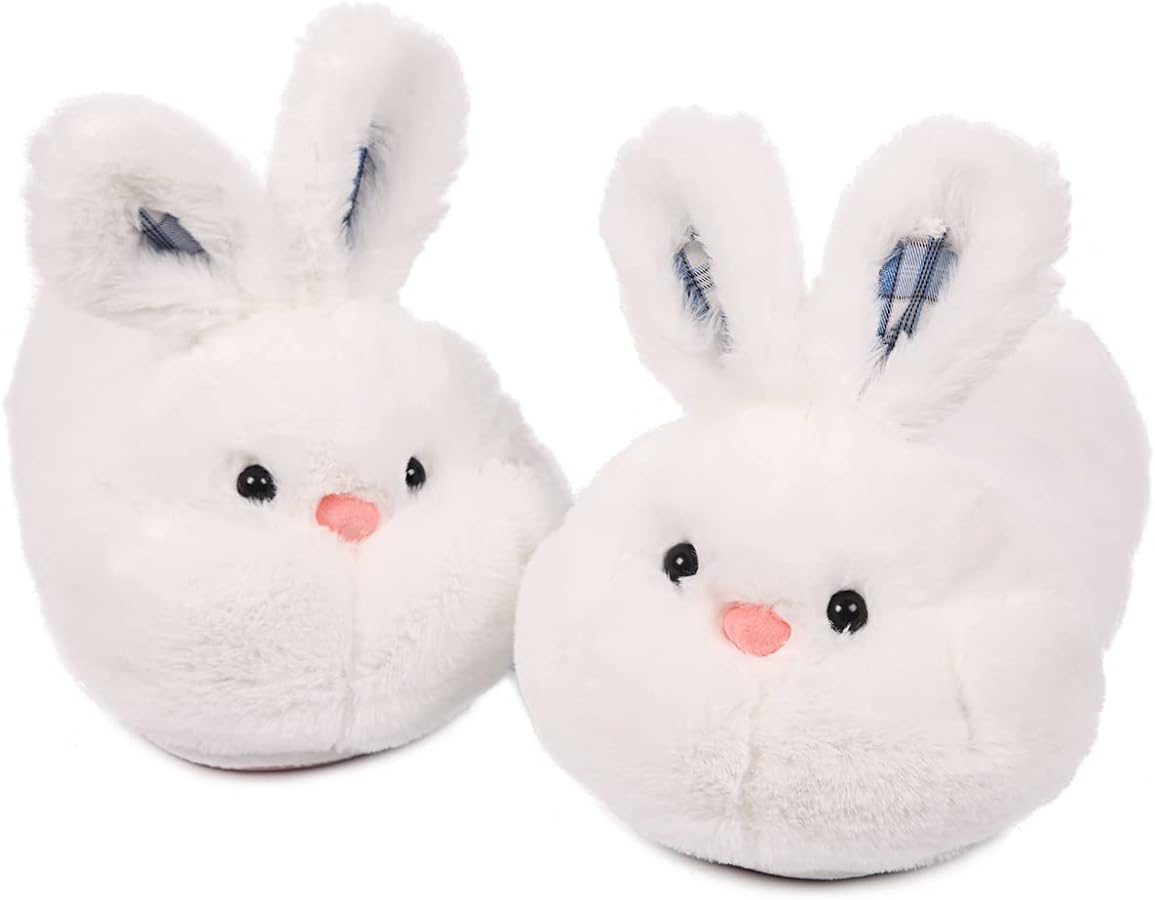
Bunny Slippers: Why Are They So Popular and Comfortable?
Introduction:
Bunny slippers have become a beloved footwear choice for many due to their unique blend of comfort, warmth, and charming design. Whether worn by children, teens, or adults, these slippers add a playful touch to loungewear. This guide explores the various facets of bunny slippers, including their features, benefits, types, materials, and tips for choosing and maintaining the perfect pair.
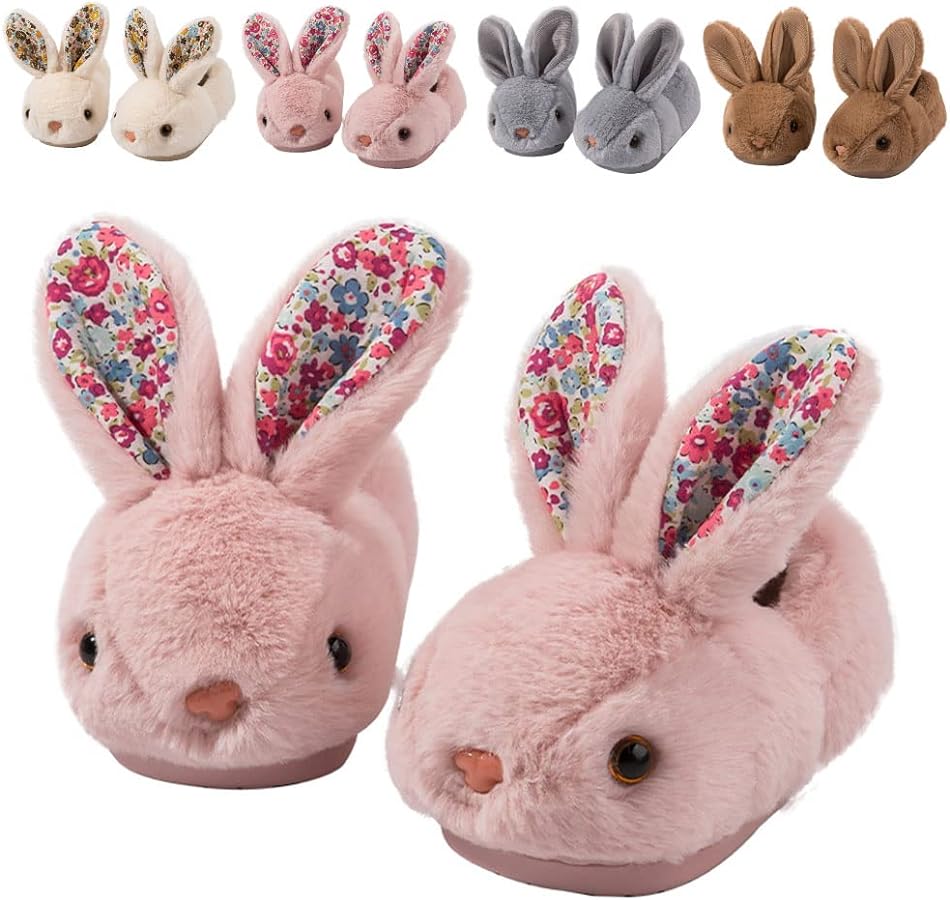
Bunny Slippers:
Why Are They So Popular and Comfortable?
Design:
What Makes Bunny Slippers Distinctive and Appealing?
Bunny slippers stand out due to their whimsical design and attention to detail. They offer a distinct charm that makes them a staple in cozy home attire.
Charming Aesthetics:
Playful and Fun:
Adorable Features: Bunny slippers are characterized by their cute and whimsical appearance. With features like floppy ears, button noses, and tiny whiskers, they add a playful element to your loungewear. These charming details make them a favorite among both children and adults.
Variety of Styles:
Design Diversity:
Personal Expression: These slippers come in various styles, ranging from realistic bunny designs to cartoonish interpretations. Some feature additional elements like bows, glitter, or themed costumes, allowing wearers to express their personalities and preferences through their footwear.
Comfort:
Why Are Bunny Slippers So Comfortable?
Comfort is a significant factor in the popularity of bunny slippers. Their design and materials ensure a cozy experience for the wearer.
Soft Materials:
Cushioning and Warmth:
Plush Fabrics: Bunny slippers are often made from soft and plush materials such as fleece, faux fur, and microfiber. These fabrics provide excellent cushioning and warmth, making the slippers incredibly comfortable to wear.
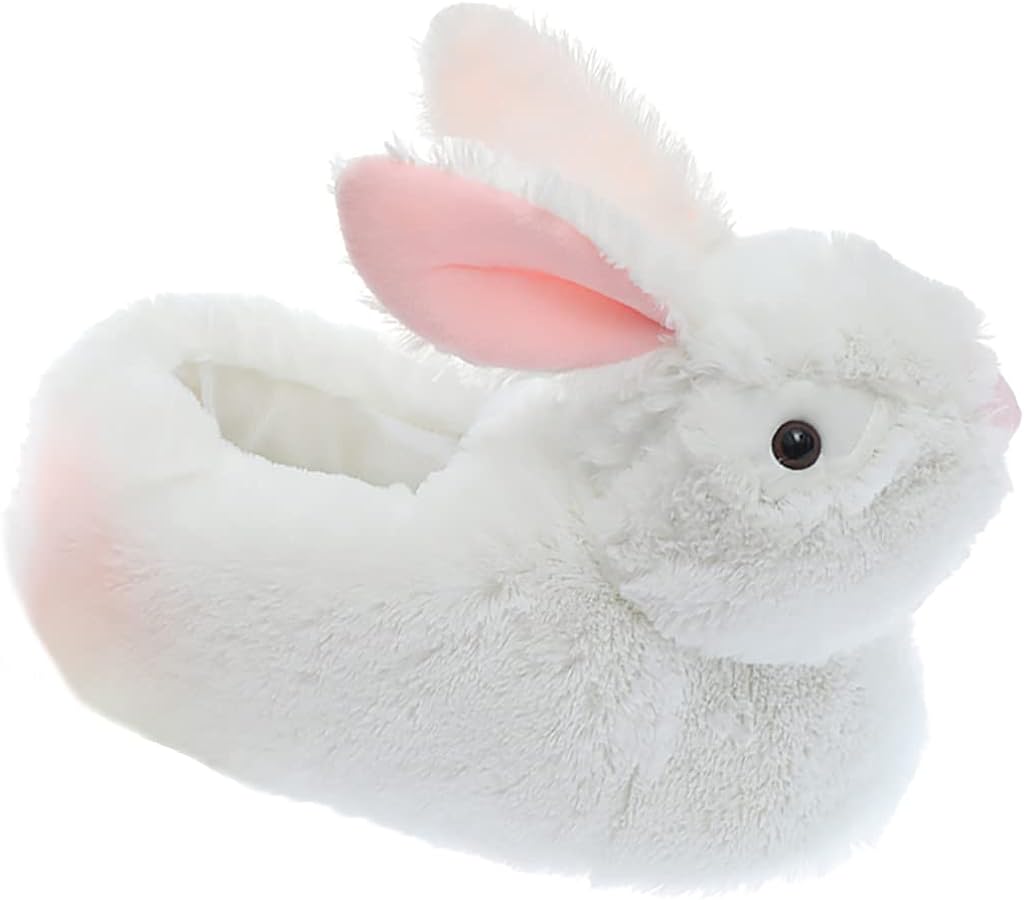
Padded Soles:
Support and Comfort:
Foam Footbeds: Many bunny slippers feature padded soles with memory foam or cushioned footbeds. This padding provides additional support and comfort, reducing foot fatigue and making them suitable for prolonged wear.
Heat Retention:
Warm and Cozy:
Snug Fit: The design of bunny slippers ensures that your feet stay warm, making them ideal for cold weather. The snug fit and insulating materials help retain body heat, providing a cozy and comfortable experience.
Practicality:
What Practical Benefits Do Bunny Slippers Offer?
Beyond their adorable design and comfort, bunny slippers offer several practical benefits that make them a practical choice for home footwear.
Easy to Wear:
Slip-On Style:
Convenience: Bunny slippers typically feature a slip-on design, making them easy to wear and remove. This convenience is especially beneficial for quick changes or when you need to slip into something comfortable after a long day.
Non-Slip Soles:
Safety Features:
Stable Grip: Many bunny slippers come with non-slip soles, providing extra traction on smooth or slippery surfaces. This feature enhances safety, especially on hardwood or tiled floors, reducing the risk of slips and falls.
Machine Washable:
Easy Maintenance:
Hygienic Option: Most bunny slippers are machine washable, making them easy to clean and maintain. Regular washing keeps them fresh and hygienic, prolonging their lifespan and ensuring they remain comfortable and appealing.
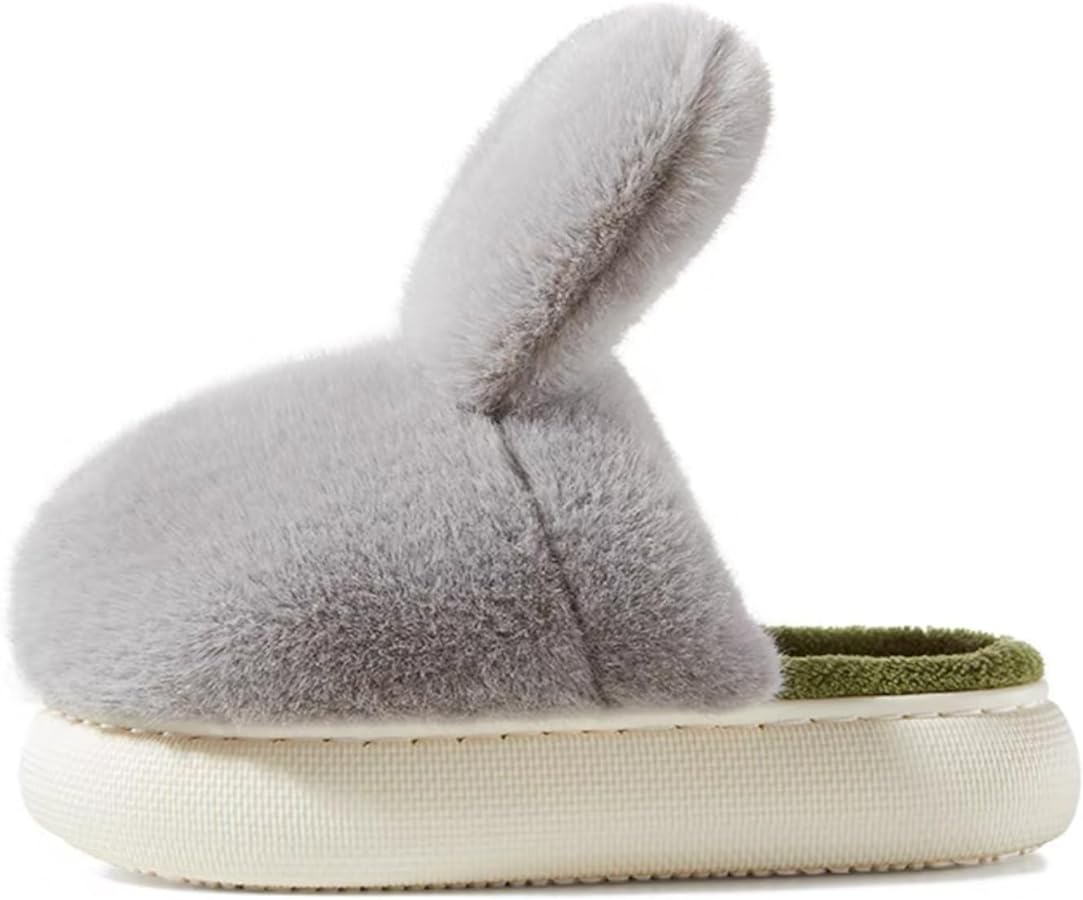
Types:
What Are the Different Types of Bunny Slippers Available?
Bunny slippers come in various types, each offering unique features and benefits to suit different preferences and needs.
Classic Bunny Slippers:
Traditional Design:
Timeless Appeal: Classic bunny slippers feature all the quintessential elements—floppy ears, button noses, and plush bodies. These slippers are a timeless favorite, providing a blend of comfort and charm.
Character-Themed Slippers:
Pop Culture Influence:
Fan Favorites: Inspired by popular characters from movies, TV shows, and books, character-themed bunny slippers add a touch of fandom to your loungewear. Whether it’s a beloved animated bunny or a whimsical interpretation, these slippers appeal to fans of all ages.
Heated Bunny Slippers:
Warmth on Demand:
Electric Heating: For those who need extra warmth, heated bunny slippers are an excellent choice. These slippers come with built-in heating elements or microwaveable inserts that provide additional heat, making them perfect for cold winter nights.
Novelty Bunny Slippers:
Unique and Fun:
Creative Designs: Novelty bunny slippers push the boundaries of traditional design, featuring creative and sometimes extravagant interpretations. From glow-in-the-dark features to over-the-top embellishments, these slippers are designed to stand out and make a statement.
Choosing the Right Pair:
What Factors Should You Consider When Selecting Bunny Slippers?
Selecting the perfect pair of bunny slippers involves considering several key factors to ensure they meet your comfort, style, and practical needs.
Size and Fit:
Proper Sizing:
Comfort and Security: Ensure that the slippers fit well, neither too loose nor too tight. Proper sizing is crucial for comfort and safety, preventing slips and ensuring that the slippers stay securely on your feet.
Material Quality:
Durability and Comfort:
Choose High-Quality Fabrics: Look for slippers made from high-quality materials that offer both comfort and durability. Plush fabrics like fleece and faux fur provide cushioning and warmth, while high-quality soles ensure longevity.
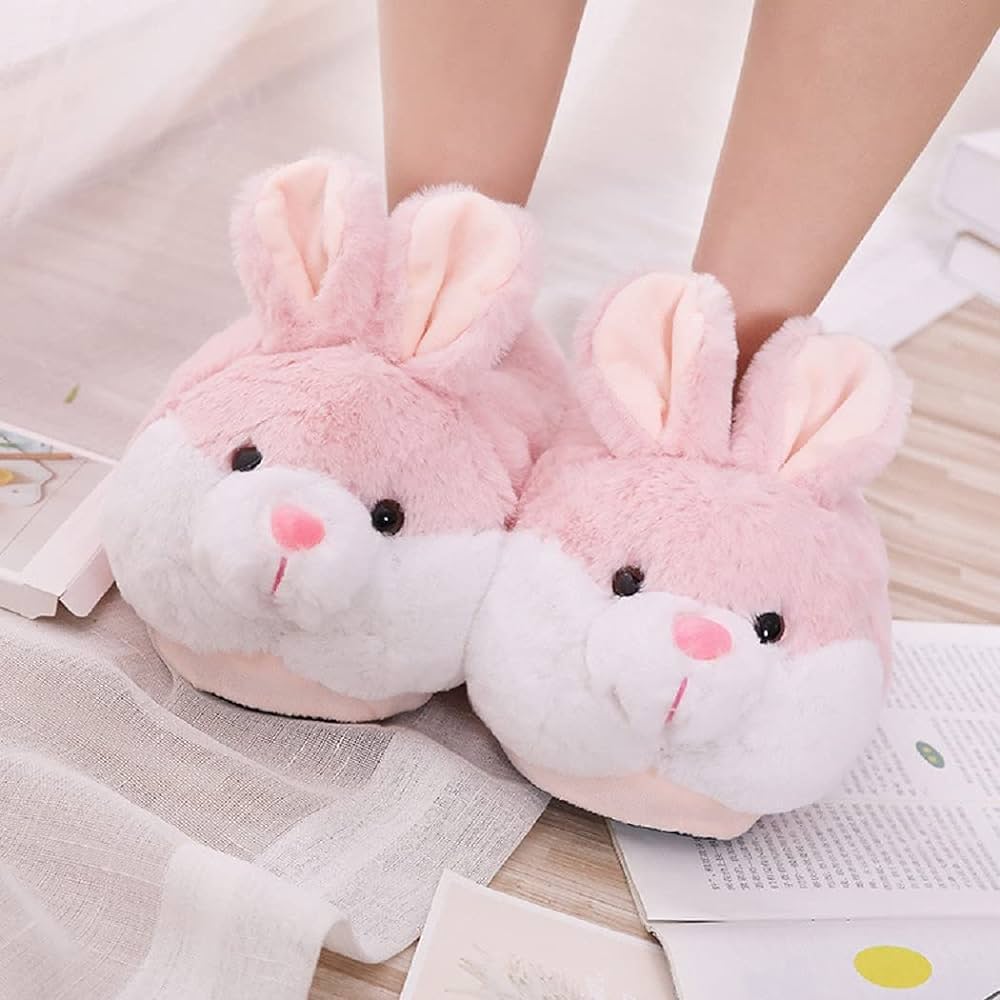
Purpose:
Intended Use:
Match Your Needs: Consider how you plan to use the slippers. For everyday wear around the house, classic bunny slippers may suffice. If you need extra warmth or have specific preferences, heated or character-themed slippers might be more suitable.
Budget:
Cost and Value:
Investment in Comfort: Determine your budget and find a pair that offers the best value within your price range. While it’s tempting to go for the cheapest option, investing in a high-quality pair can offer better comfort and durability in the long run.
Aesthetic Preference:
Style and Design:
Personal Expression: Choose a design that reflects your style and personality. With the wide variety of bunny slipper designs available, from classic to novelty, there’s something for everyone to enjoy.
Maintenance:
How Do You Keep Bunny Slippers Clean and Fresh?
Proper maintenance is essential to keep your bunny slippers in good condition, ensuring they remain comfortable and appealing over time.
Regular Cleaning:
Routine Maintenance:
Keep Them Fresh: Clean your slippers regularly to remove dirt and odors. Many bunny slippers are machine washable—simply follow the care instructions provided by the manufacturer. Use a gentle cycle and air dry to maintain their shape and softness.
Spot Cleaning:
Tackle Stains:
Quick Fixes: For minor stains or spills, spot cleaning can be effective. Use a mild detergent and a soft cloth to gently clean the affected area, then let it air dry completely.
Odor Prevention:
Keep Them Smelling Fresh:
Baking Soda: To prevent odors, sprinkle a small amount of baking soda inside the slippers and let it sit for a few hours before shaking it out. This helps absorb moisture and neutralize any unpleasant smells.
Storage:
Proper Storage:
Maintain Shape: Store your slippers in a cool, dry place away from direct sunlight. Avoid stacking heavy objects on top of them to maintain their shape. Using shoe organizers or dedicated storage bins can keep them tidy and easily accessible.
Repairs:
Fixing Minor Issues:
Extend Lifespan: For minor issues like loose stitching or small tears, consider making repairs to extend their lifespan. Simple sewing kits can handle most minor fixes, preventing the need for premature replacement.
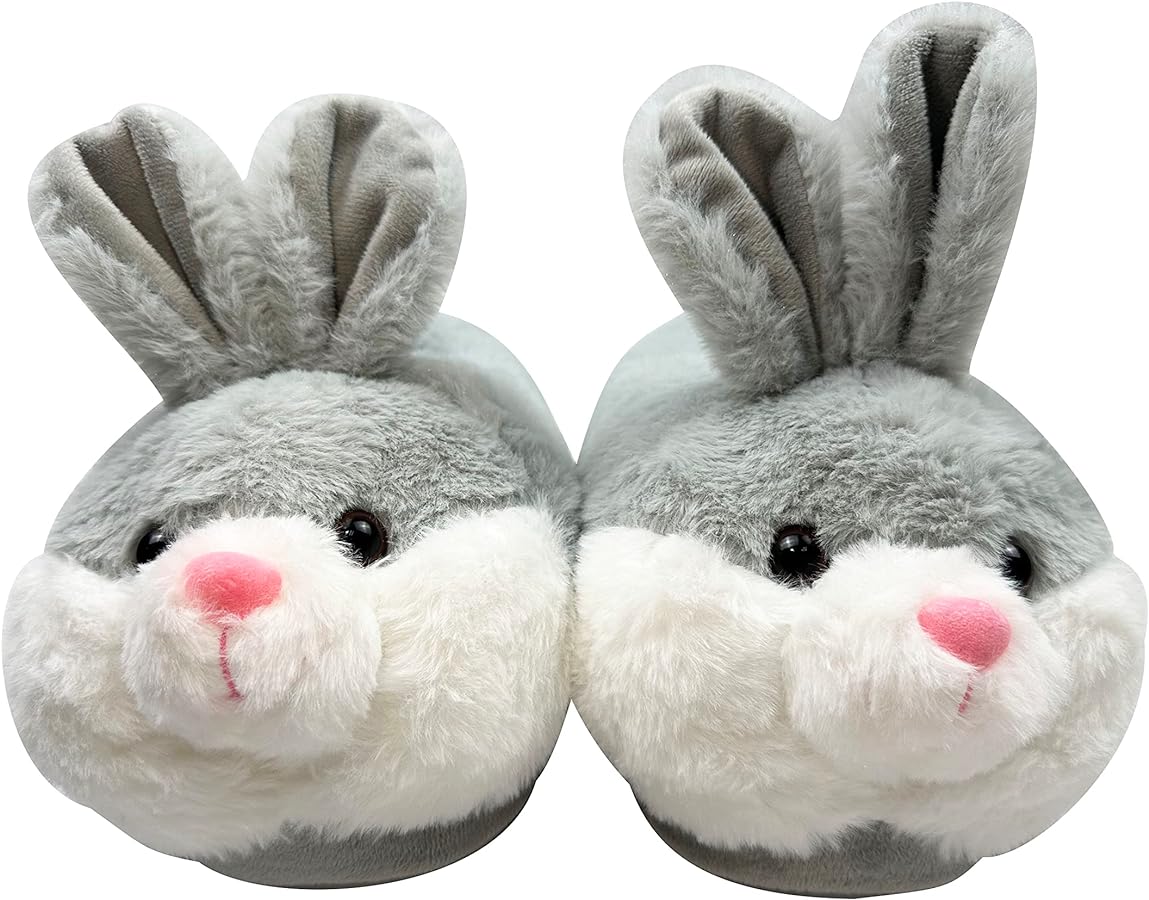
Popular Brands:
Which Brands Offer the Best Bunny Slippers?
Several brands are known for their high-quality bunny slippers, combining comfort, durability, and delightful designs.
Ofoot:
Soft and Cozy:
Plush Delight: Ofoot is known for producing incredibly soft and cozy bunny slippers. Their designs often feature thick plush fabric and comfortable soles, making them a favorite for those seeking maximum comfort.
EverFoams:
Memory Foam Comfort:
Supportive Footwear: EverFoams specializes in slippers with memory foam insoles, providing enhanced support and cushioning. Their bunny slippers are designed for all-day comfort, making them ideal for indoor wear.
Luxehome:
Charming Designs:
Adorable Style: Luxehome offers a variety of charming and whimsical bunny slipper designs. Their attention to cute details and high-quality materials makes them a popular choice for both children and adults.
Lazy One:
Fun and Quirky:
Colorful Choices: Lazy One is known for their fun and quirky slipper designs, including playful bunny slippers. Their products often feature vibrant colors and humorous elements, perfect for those who want their loungewear to be as playful as possible.
Dearfoams:
Classic Comfort:
Timeless Appeal: Dearfoams combines classic slipper designs with modern comfort features. Their bunny slippers offer a blend of timeless style and reliable comfort, suitable for a range of preferences and needs.
Conclusion
Bunny slippers are beloved for their unique combination of comfort, warmth, and whimsical design. From their soft materials and cushioned footbeds to their charming aesthetics and practical benefits, they offer a delightful addition to any loungewear collection. With various types available, including classic, character-themed, heated, and novelty options, there’s a pair to suit every preference and need. When choosing bunny slippers, consider factors like size, fit, material quality, intended use, budget, and personal style to find the perfect pair. Proper maintenance, including regular cleaning, spot treatment, and correct storage, will ensure they remain fresh, comfortable, and appealing over time. Brands like Ofoot, EverFoams, Luxehome, Lazy One, and Dearfoams are renowned for their high-quality bunny slippers, offering delightful designs and enhanced comfort. Whether worn for relaxation, warmth, or just a touch of playful cheer, bunny slippers continue to be a popular and cherished choice for cozy home footwear.
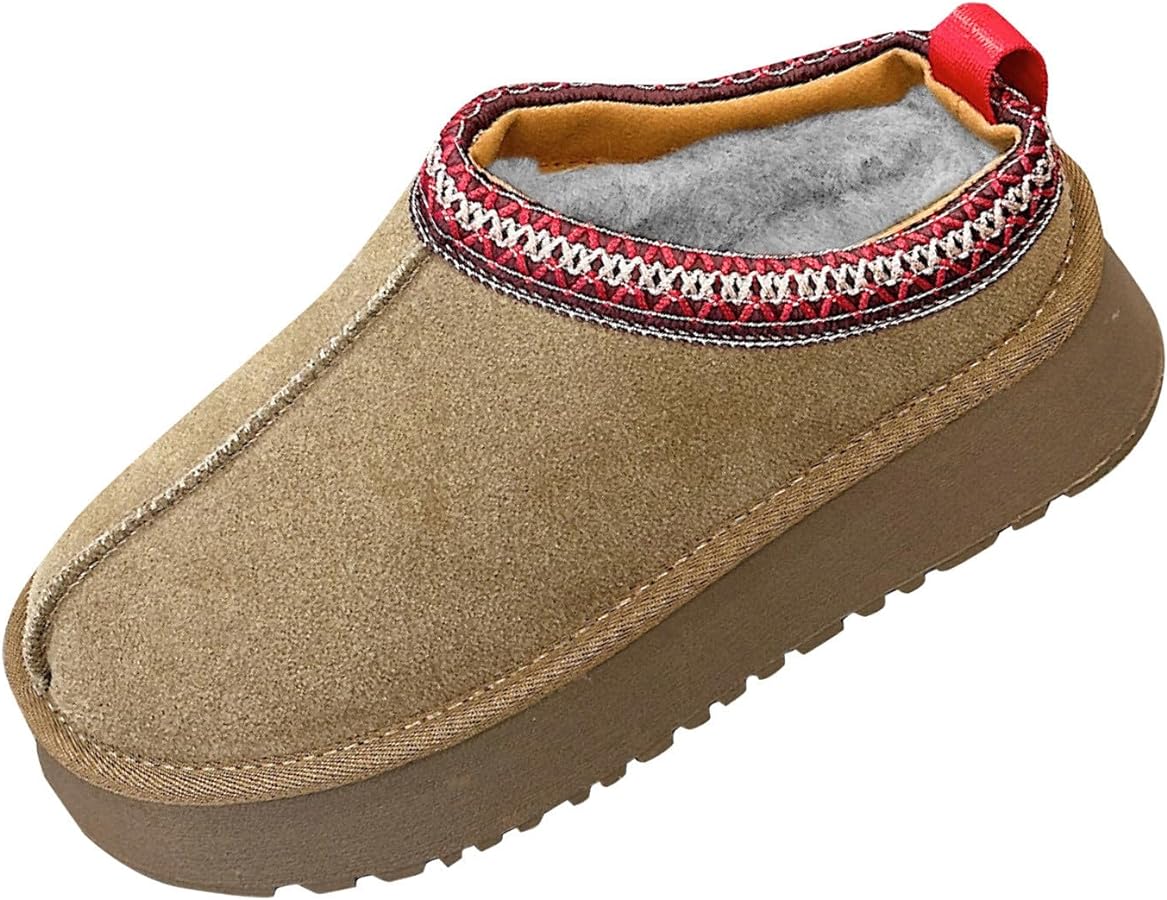
UGG Tasman Slippers for Women’s Size 8: Are They Worth It?
Introduction:
The UGG Tasman slippers are a popular choice for women seeking a blend of comfort, warmth, and style for indoor and occasional outdoor wear. If you’re considering purchasing the UGG Tasman slippers in a women’s size 8, this detailed guide will help you understand their key features, materials, fit, user experiences, maintenance tips, and how they compare to other slippers in the market. Whether you’re looking for the perfect house slipper or a versatile option that fits your daily routines, this guide provides comprehensive insights to inform your decision.
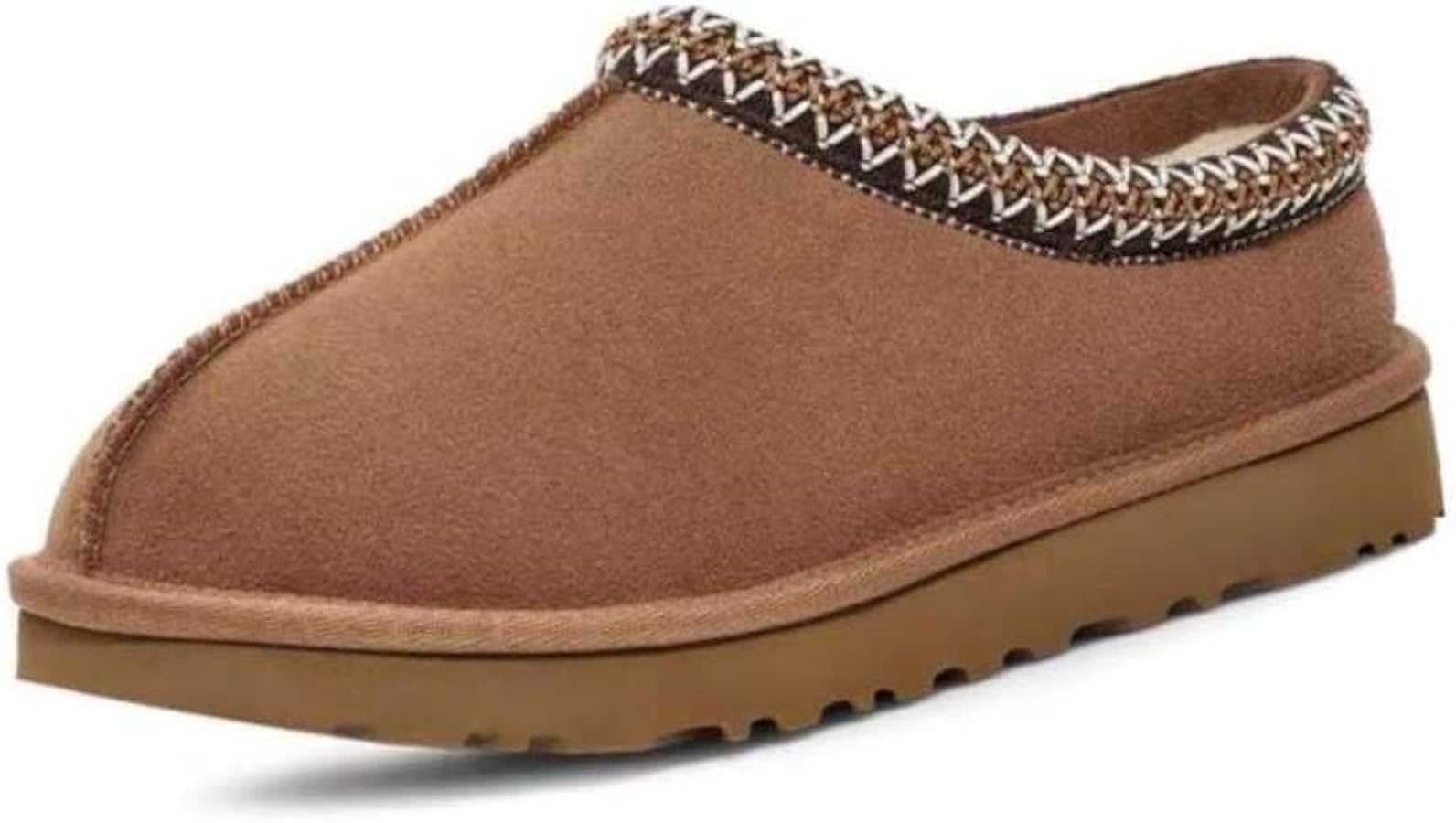
UGG Tasman Slippers for Women’s Size 8:
Are They Worth It?
Understanding the Appeal of UGG Tasman Slippers
The UGG Tasman slippers are renowned for their combination of luxurious materials, stylish design, and practical features.
Signature Sheepskin Comfort: One of the main appeals of UGG Tasman slippers is their plush sheepskin lining, known for exceptional warmth and softness. Sheepskin naturally wicks away moisture, keeping your feet dry and comfortable, making these slippers ideal for cooler climates.
Stylish Design: The Tasman slippers feature a classic design with a touch of elegance, characterized by the iconic Tasman braid on the collar. This stylish appeal makes them suitable for indoor wear and quick trips outside without compromising on looks.
Durable Construction: These slippers are constructed with high-quality materials, including a suede upper and a durable EVA outsole. The combination ensures longevity and versatility, capable of withstanding everyday wear.
Key Features of UGG Tasman Slippers
Several features distinguish the UGG Tasman slippers, making them a preferred choice for women seeking high-quality, comfortable slippers.
Premium Materials: The UGG Tasman slippers are crafted from soft suede and lined with genuine sheepskin, providing warmth and luxurious comfort. The materials also offer breathability, crucial for maintaining a balanced foot temperature.
EVA Outsole: The EVA (ethylene-vinyl acetate) outsole is lightweight yet durable, providing excellent traction and durability.
Tasman Braid: The classic Tasman braid around the collar adds a decorative touch and unique style. This distinctive design element sets the slippers apart from simpler styles, making them a fashionable choice.
Slip-On Design: The convenient slip-on design ensures easy on and off, ideal for quick wear and immediate comfort. Despite their simplicity, the slippers provide a snug fit that keeps them secure on your feet.
Versatile Use: While primarily intended for indoor use, the durable outsole and stylish design allow for occasional outdoor wear. This versatility makes the Tasman slippers suitable for various daily tasks and activities.
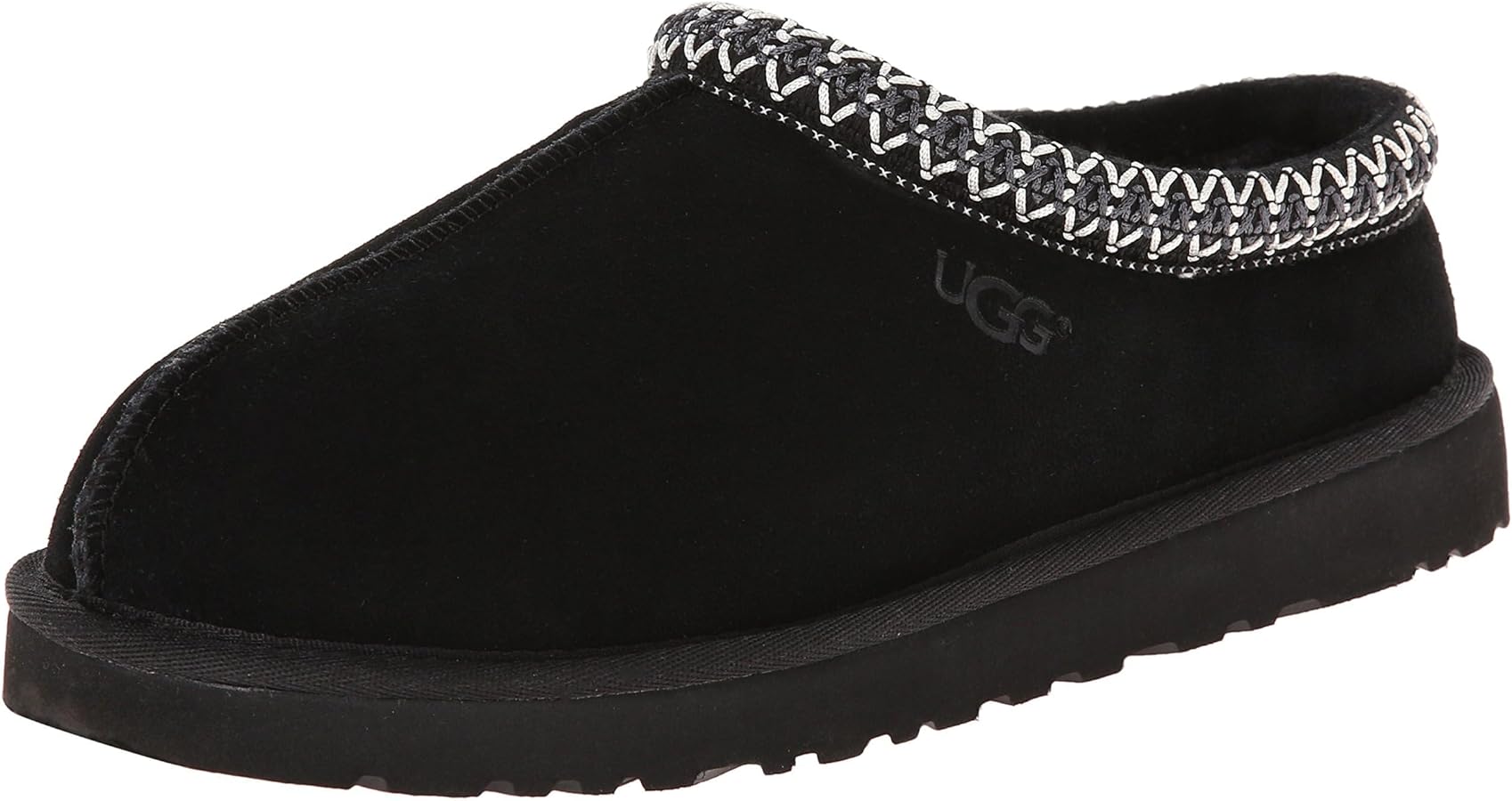
Sizing and Fit for Women’s Size 8
Ensuring the right size and fit is crucial for maximizing comfort and usage of the UGG Tasman slippers.
True to Size: UGG Tasman slippers generally run true to size. For most women, ordering their regular size, such as a size 8, provides an accurate and comfortable fit. The slippers are designed to accommodate various foot shapes while providing ample room for natural foot movement.
Break-In Period: Like many high-quality footwear options, there may be a short break-in period. Initially, the sheepskin lining might feel snug, but it will conform to the shape of your foot with wear, offering a custom fit and enhanced comfort.
Half Sizes: If you are between sizes, UGG recommends choosing the nearest size up. For example, if you typically wear a 7.5, it’s advisable to go for a size 8 to ensure a comfortable fit.
Arch Support: While the Tasman slippers provide good overall comfort and cushioning, they might lack significant arch support. If additional support is needed, consider using an orthotic insole that fits within the slipper.
User Insights and Experiences
Real-world feedback from users who wear the UGG Tasman slippers in women’s size 8 provides practical insights into their performance and comfort.
Positive Feedback on Comfort: Many users praise the comfort of the Tasman slippers, noting the plush sheepskin lining and cushioned outsole. The combination of soft materials and supportive construction makes them a favorite for lounging at home.
Warmth and Insulation: Users appreciate the warmth provided by the Tasman slippers, especially during colder months. The genuine sheepskin lining effectively insulates against the cold while allowing breathability to prevent overheating.
Durability over Time: Long-term users report that the high-quality materials and construction of the Tasman slippers withstand regular wear without significant signs of aging. The durable suede and EVA outsole maintain their appearance and functionality over time.
Versatility for Indoor and Outdoor Use: The versatility of the Tasman slippers is frequently mentioned, with users finding them suitable for both indoor comfort and brief outdoor activities. The sturdy outsole provides confidence in stepping outside without switching to outdoor shoes.
Challenges and Adaptations: Some users with specific foot shapes or arch support needs mention the addition of insoles for optimal comfort. Additionally, while the initial snugness of the sheepskin lining is beneficial, a break-in period is sometimes needed for ideal fit.
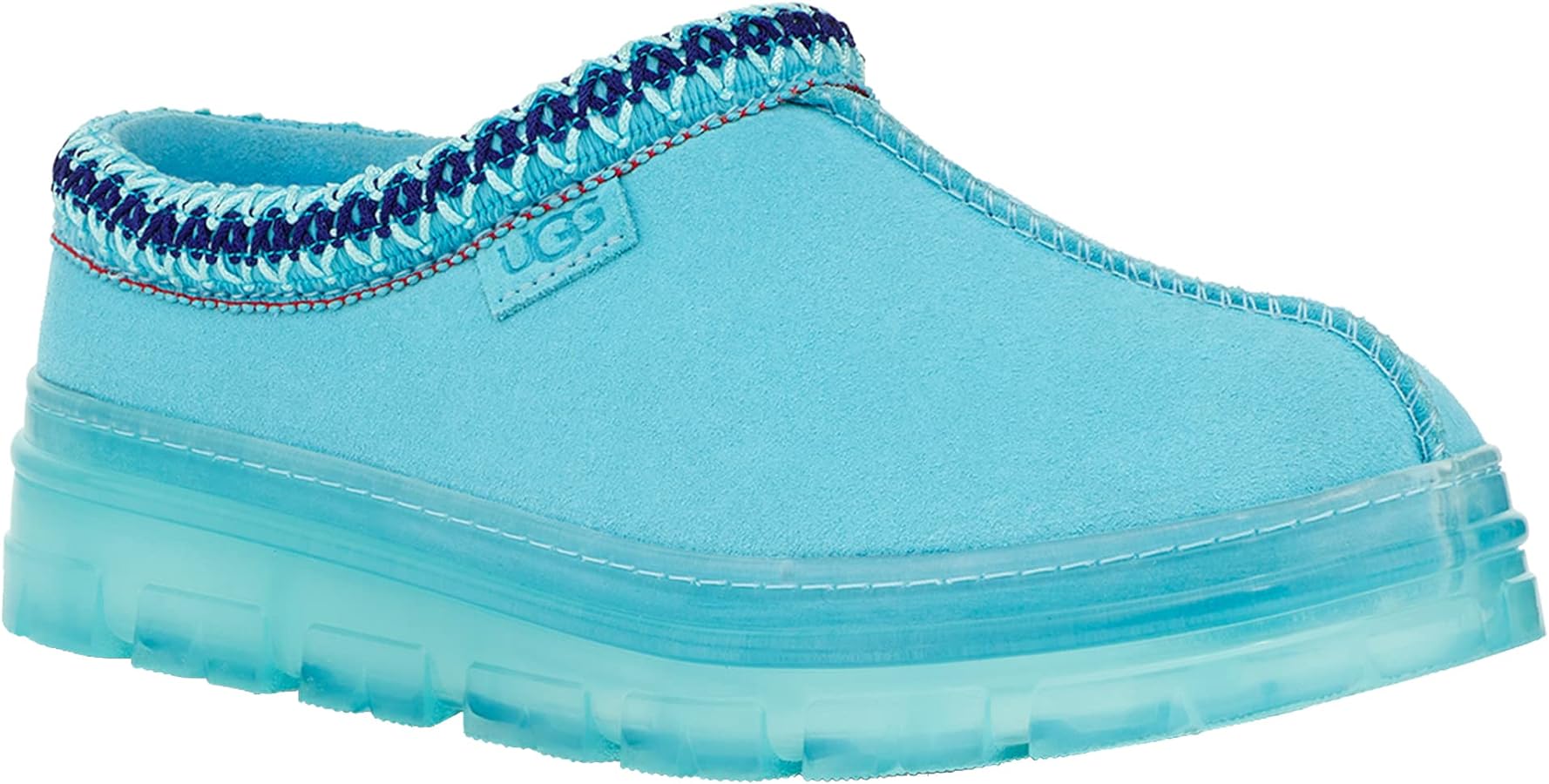
Comparing UGG Tasman Slippers to Other House Slippers
Understanding how UGG Tasman slippers compare to other house slipper options helps in making an informed decision.
UGG Tasman Slippers vs. UGG Scuffette: The UGG Scuffette slippers feature a similar sheepskin lining and comfortable design but with an open-back style.
UGG Tasman Slippers vs. LL Bean Wicked Good Moc: The LL Bean Wicked Good Moccasin offers similar warmth and comfort with genuine shearling lining. However, the Tasman’s stylish braid embellishment and EVA outsole provide a more versatile option for indoor and outdoor activities.
UGG Tasman Slippers vs. Acorn Moc Slippers: Acorn Moc Slippers are known for their comfort and memory foam insoles. While they provide excellent cushioning, the Tasman slippers offer superior warmth with sheepskin lining and a stylish design that stands out.
Price and Value: The UGG Tasman slippers are priced higher than some other brands but offer lasting value due to their premium materials, stylish design, and durability. Investing in UGG’s quality ensures long-term comfort and usage.
Maintaining and Caring for UGG Tasman Slippers
Proper maintenance extends the life of your UGG Tasman slippers and keeps them looking and feeling great.
Regular Cleaning: Use a suede brush to remove dirt and restore the texture of the suede upper. For the sheepskin lining, gently shake off any loose debris and use a soft cloth to wipe it clean. Avoid soaking the slippers, as excessive moisture can damage the materials.
Dealing with Stains: For minor stains, use a damp cloth and a mixture of water and mild detergent to spot clean affected areas. After cleaning, allow the slippers to air dry away from direct heat or sunlight to prevent distortion.
Odor Control: To keep the slippers fresh, sprinkle baking soda inside them and let it sit overnight. Shake out any excess baking soda the next day. Regularly airing out the slippers can also help prevent odor buildup.
Protecting the Suede: Apply a suede protector spray to shield the suede from water and stains. Reapply the protector periodically to maintain its effectiveness and protect the slippers’ appearance.
Lining Maintenance: Keep the sheepskin lining in top condition by gently brushing it to maintain its fluffiness. Make sure the lining stays dry to preserve its softness and insulating properties.
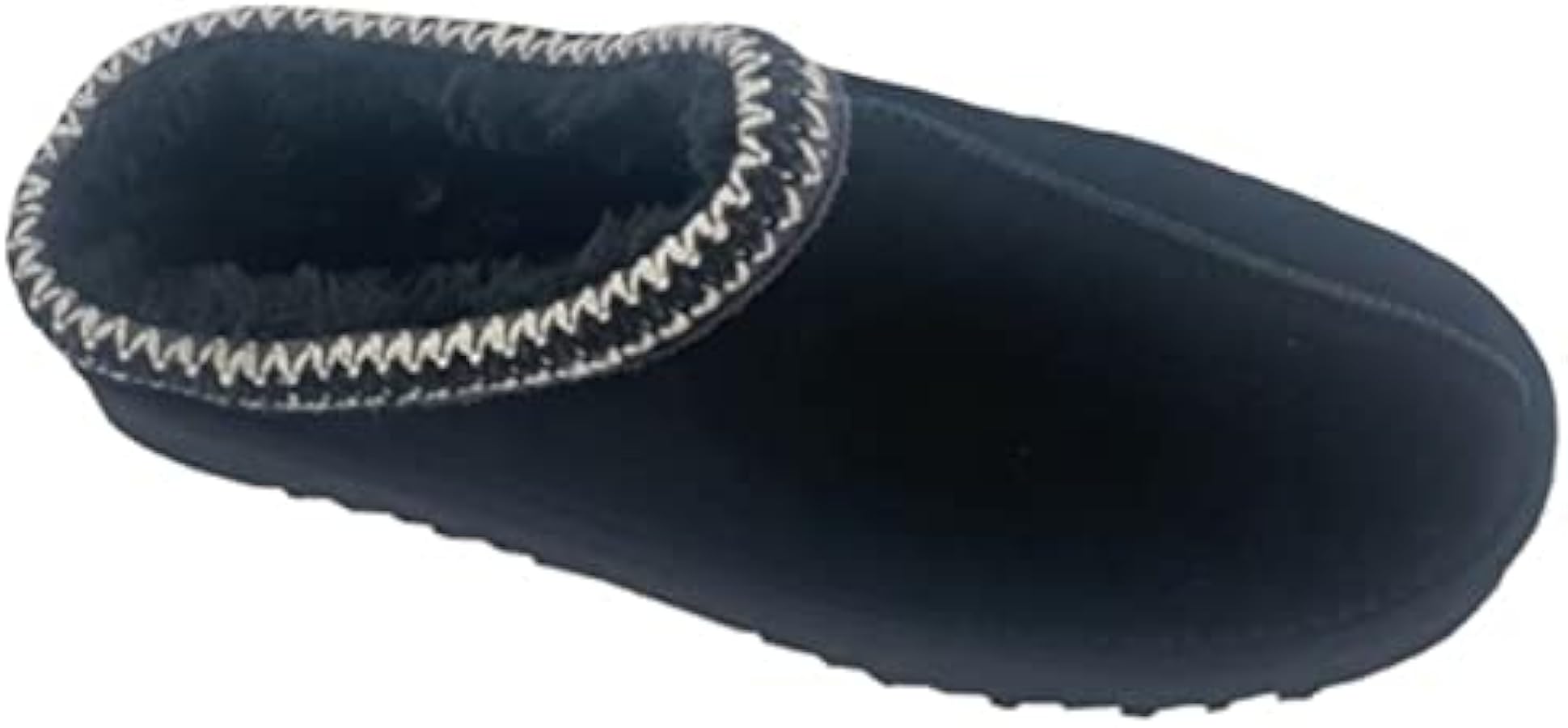
Professional Recommendations for UGG Tasman Slippers
Footwear professionals and home comfort experts provide valuable tips and recommendations for UGG Tasman slippers.
Footwear Specialist Advice: Specialists recommend ensuring a proper fit by trying on the slippers in the afternoon when feet are slightly swollen. This practice ensures the slippers remain comfortable throughout the day. They also suggest considering the use of orthotic insoles for added support if needed.
Home Comfort Expert Tips: Home comfort experts note the stylish design of the Tasman slippers, advising that their versatile look can complement various indoor attire. They emphasize the importance of regular maintenance to keep the slippers looking fresh and comfortable.
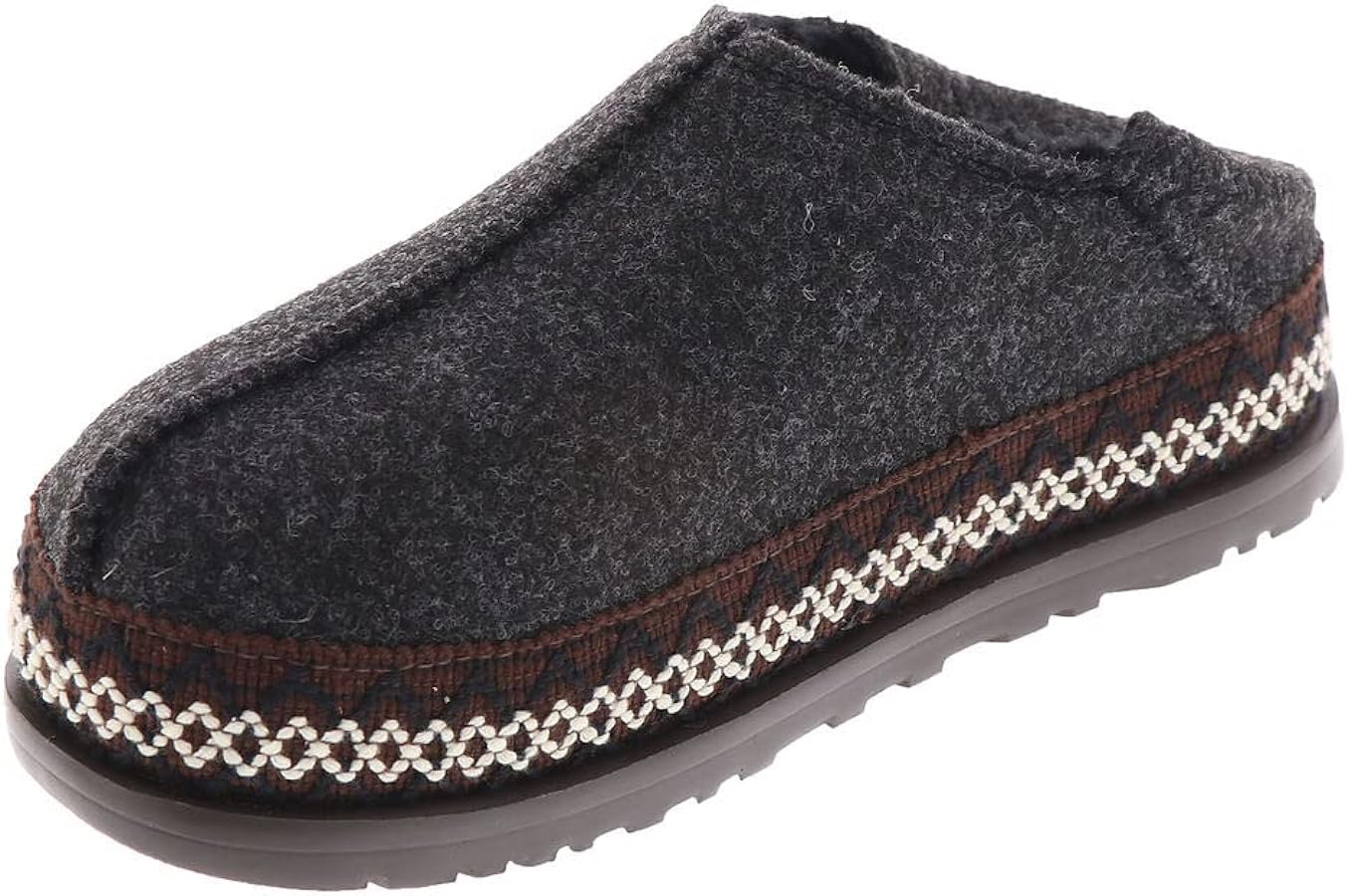
Conclusion
The UGG Tasman slippers in women’s size 8 offer a perfect blend of comfort, style, and durability, making them an excellent choice for both indoor and occasional outdoor wear. Understanding their key features, fitting considerations, user experiences, and maintenance tips ensures you can maximize their benefits and longevity. Comparing UGG Tasman slippers to other house slippers highlights their unique advantages. Considering professional recommendations and environmental aspects offers a comprehensive perspective. Investing in UGG Tasman slippers ensures long-lasting comfort and style, making them a valuable addition to your home wardrobe.
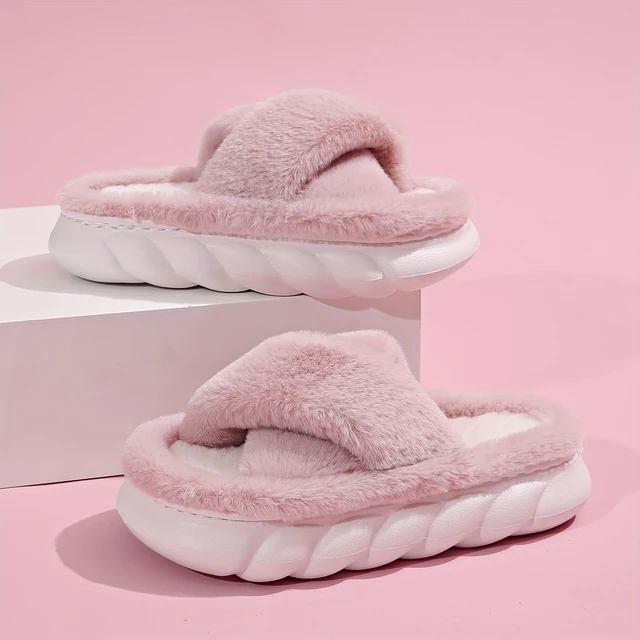
What Are the Best Women’s Pink UGG Slippers?
Introduction:
UGG is renowned for its high-quality, luxurious footwear that offers unmatched comfort and style. Among their popular offerings are women’s pink UGG slippers, which combine the brand’s signature warmth and coziness with a touch of feminine flair. This comprehensive guide explores the various styles of women’s pink UGG slippers, their features, benefits, and how to choose the best pair for your needs. Let’s delve into what makes pink UGG slippers a fantastic choice and how to select the perfect pair.
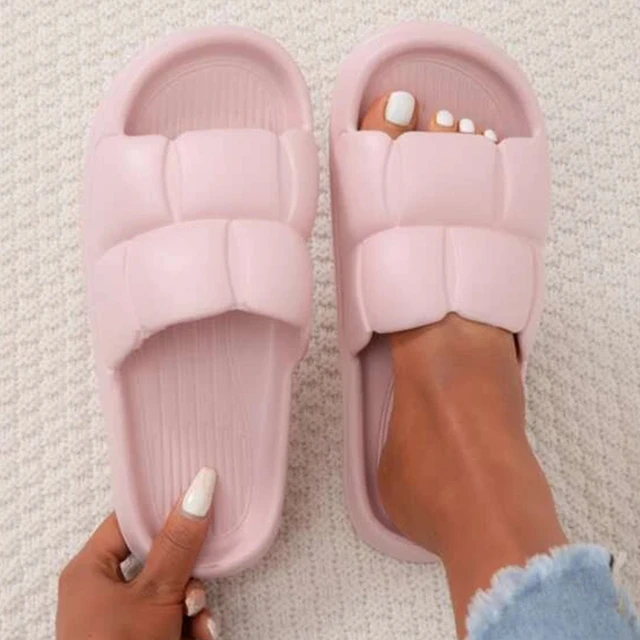
What Are the Best Women’s Pink UGG Slippers?
Understanding the Appeal of UGG Slippers
Before diving into specific styles, it’s essential to understand why UGG slippers are so highly regarded.
Unmatched Comfort: UGG slippers are designed with premium materials that provide exceptional comfort. The plush sheepskin lining and cushioned insoles ensure that your feet stay warm and comfortable, no matter the season.
High-Quality Materials: UGG uses top-quality materials like genuine sheepskin, suede, and leather, known for their durability and luxurious feel. These materials contribute to the overall longevity and appeal of the slippers.
Stylish Designs: UGG slippers are available in various styles and colors, including the trendy pink hue. Their elegant and versatile designs make them suitable for both indoor lounging and outdoor wear.
Versatile Functionality: UGG slippers are not only stylish and comfortable but also versatile. They can be worn both indoors as house slippers and outdoors for casual outings, thanks to their sturdy soles and stylish appearance.
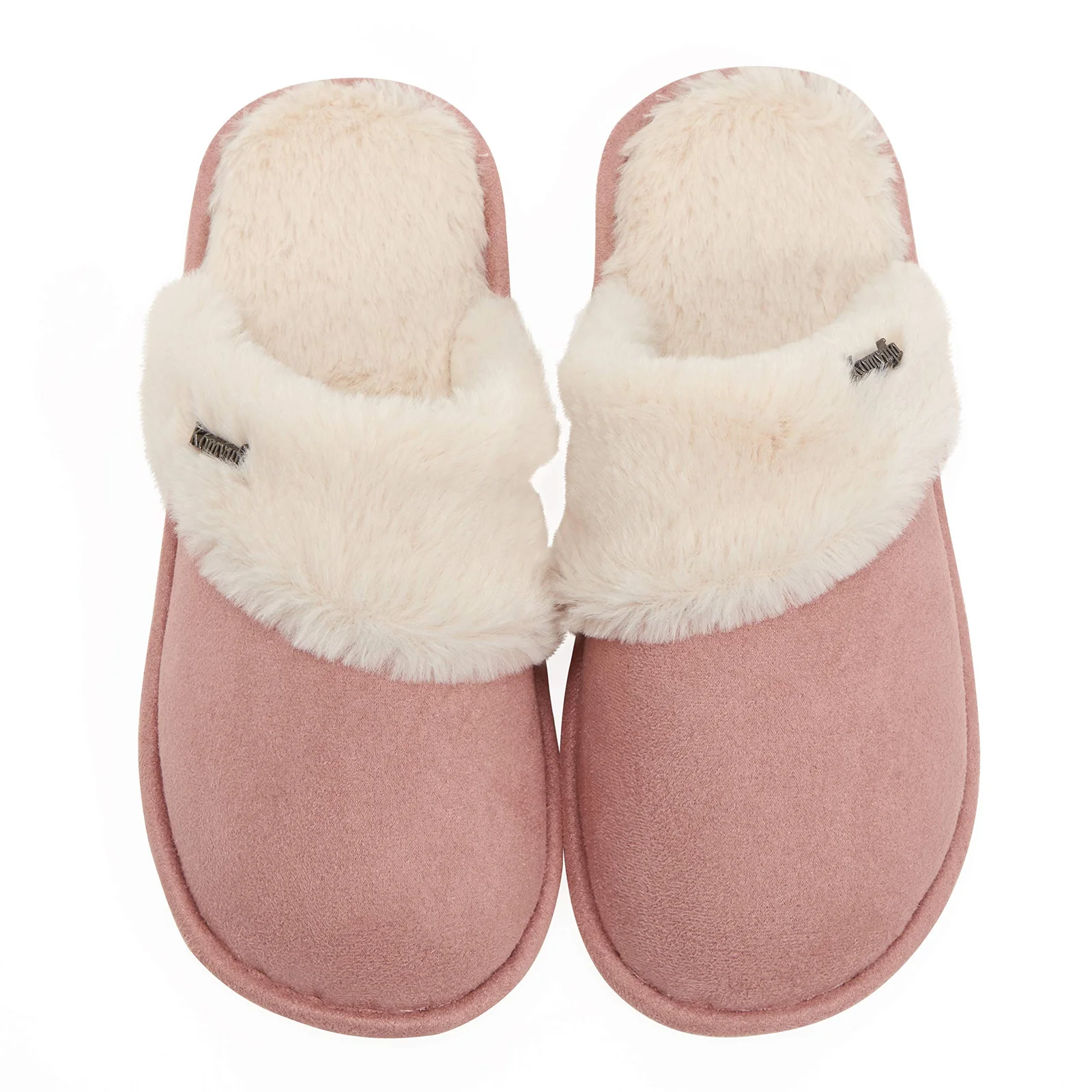
Popular Styles of Women’s Pink UGG Slippers
UGG offers various styles of pink slippers, each with unique features and benefits. Here are some of the most popular options.
UGG Fluff Yeah Slide
The UGG Fluff Yeah Slide is a fun and fashionable choice that combines the coziness of a slipper with the functionality of a sandal.
Features:
- Made from plush sheepskin, the Fluff Yeah Slide provides a luxuriously soft and comfortable feel.
- The open-toe design allows for breathability, making it suitable for warmer weather.
- An elastic heel strap ensures a secure fit and adds a stylish touch.
- The durable rubber outsole makes these slippers suitable for both indoor and outdoor wear.
Benefits:
- Stylish and trendy design that stands out.
- The combination of sheepskin and an open-toe design keeps your feet comfortable in various temperatures.
- Versatile enough to be worn around the house or for casual outings.
UGG Scuffette II
The UGG Scuffette II is a classic and elegant slipper that offers timeless style and premium comfort.
Features:
- Crafted from water-resistant suede with a sheepskin collar, the Scuffette II is both durable and luxurious.
- The plush sheepskin lining keeps your feet warm and cozy.
- A sturdy rubber outsole provides traction and support, allowing for light outdoor wear.
- Available in a range of colors, including a beautiful pink hue.
Benefits:
- Classic slip-on design that is easy to wear.
- Water-resistant suede makes it suitable for light outdoor use.
- The elegant look complements various outfits and adds a touch of luxury to your loungewear.
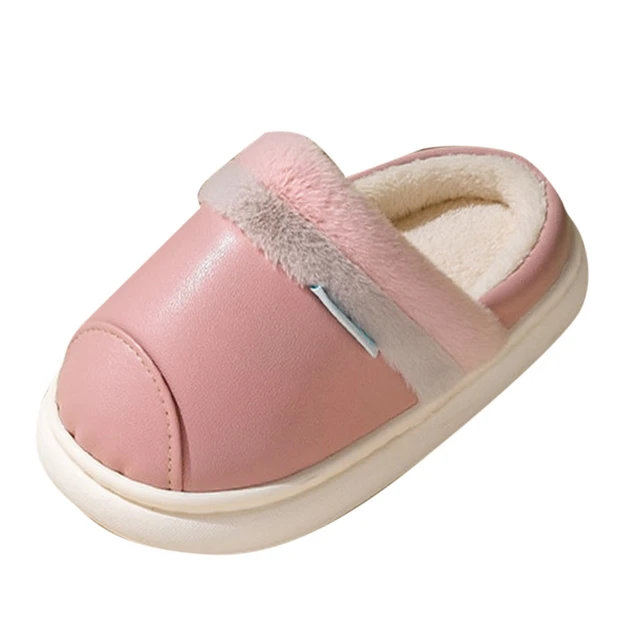
UGG Dakota
The UGG Dakota is a versatile moccasin-style slipper that combines comfort with a casual, timeless look.
Features:
- Made from water-resistant suede, the Dakota features a moc-toe design with a decorative leather bow.
- The sheepskin lining offers excellent warmth and comfort.
- A durable rubber outsole provides traction and makes the slippers suitable for both indoor and outdoor wear.
- The Dakota is available in various colors, including a soft pink shade.
Benefits:
- Moccasin design adds a classic, casual touch to your loungewear.
- Water-resistant suede ensures durability and practicality.
- Suitable for indoor lounging and casual outdoor activities.
UGG Coquette
The UGG Coquette is a cozy slip-on slipper known for its plush comfort and stylish flair.
Features:
- Constructed from soft sheepskin with a sheepskin collar, the Coquette offers a luxurious feel.
- The sheepskin lining provides excellent insulation, keeping your feet warm in cooler temperatures.
- A robust EVA outsole offers durability and traction for light outdoor wear.
- Available in multiple colors, including a lovely pink option.
Benefits:
- Luxurious and plush design that offers maximum comfort.
- The slip-on style makes it easy to put on and take off.
- Versatile enough for indoor use and short trips outside.
UGG Tasman
The UGG Tasman is a versatile slipper that features a distinctive embroidered braid on the collar, adding a unique style element.
Features:
- Made from water-resistant suede, the Tasman is lined with plush sheepskin for ultimate warmth and comfort.
- The embroidered braid adds a stylish touch to the classic slip-on design.
- A durable Treadlite by UGG™ outsole provides traction and cushioning for both indoor and outdoor wear.
- Available in various colors, including an attractive pink hue.
Benefits:
- Unique and stylish design with the embroidered braid detail.
- Water-resistant suede material ensures durability.
- The robust outsole offers versatility for indoor and outdoor use.
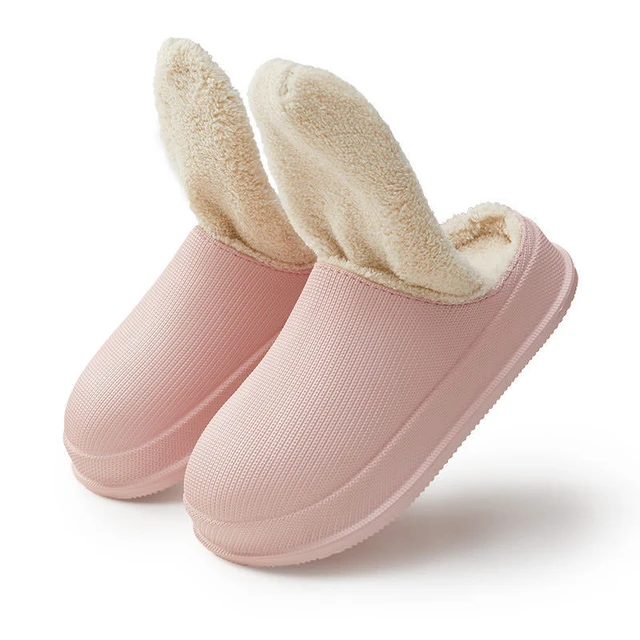
Choosing the Right Women’s Pink UGG Slippers
Selecting the perfect pair of pink UGG slippers involves considering several factors to ensure they meet your needs and preferences.
Comfort and Fit: Ensure the slippers provide a snug but comfortable fit. UGG slippers often come with a plush lining that may feel tight initially but will conform to your feet over time. Consider sizing up if you prefer a looser fit.
Material and Construction: Pay attention to the materials and construction quality. Genuine sheepskin, suede, and durable outsoles are essential for longevity and comfort. Check for features like water resistance if you plan to wear them outdoors.
Intended Use: Consider where you plan to wear your slippers. If you need them for indoor use only, softer soles may be sufficient. For outdoor use, opt for slippers with sturdy, slip-resistant outsoles.
Style and Aesthetics: Choose a style that complements your wardrobe and personal taste. The range of pink UGG slippers includes various styles from casual moccasins to trendy slides, so select one that matches your fashion preferences.
Maintenance and Care: Check the care instructions for the slippers. Some materials may be more challenging to clean and maintain. UGG offers specific care products designed to extend the life and appearance of their footwear.
User Insights and Experiences
Learning from other customers’ experiences can provide valuable insights when selecting the best pink UGG slippers.
Positive Feedback: Users frequently praise the comfort and warmth of UGG slippers, particularly the plush sheepskin lining. The stylish designs and range of colors, including pink, are also commonly appreciated.
Fit and Sizing: Many users mention the importance of correct sizing. UGG slippers may feel tight initially, but they typically stretch slightly with wear. Checking size guides and reading customer reviews can help you choose the right size.
Durability: Feedback often highlights the durability of UGG slippers, with many users noting that their quality materials and construction lead to a long lifespan. Proper care and maintenance can further enhance durability.
Versatility: Users often appreciate the versatility of UGG slippers, noting their suitability for both indoor and light outdoor use. Features like water-resistant suede and sturdy outsoles are frequently mentioned.
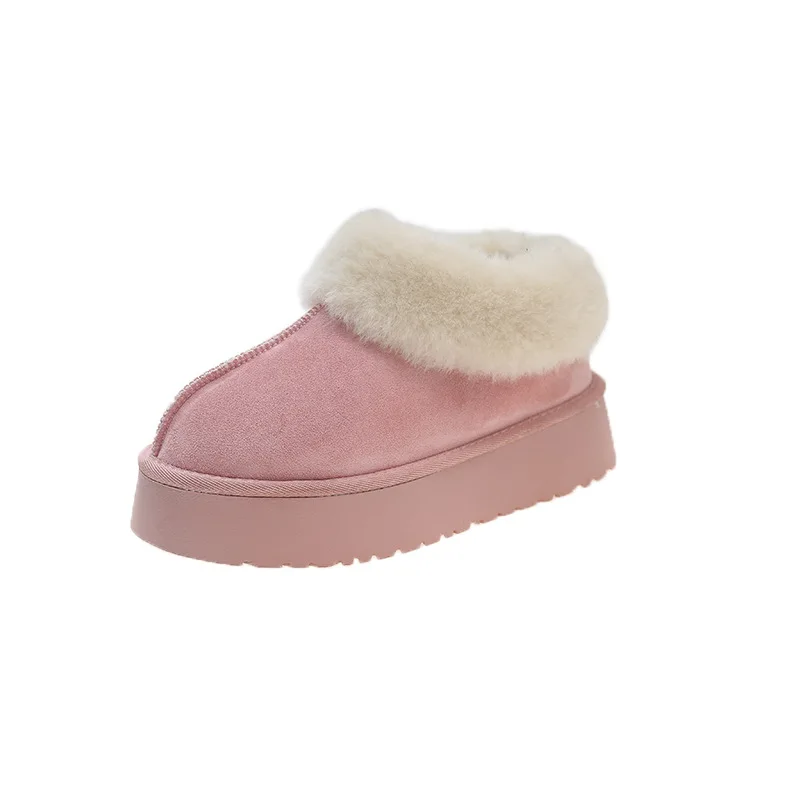
Comparing Pink UGG Slippers for Different Needs
Comparing different pink UGG slippers can help you find the best pair for your needs and preferences.
Best for Ultimate Comfort:
- UGG Fluff Yeah Slide: Known for its plush sheepskin and trendy design, offering excellent comfort and style.
- UGG Coquette: Luxurious sheepskin lining and collar provide maximum warmth and coziness.
For Versatility:
- UGG Dakota: Moccasin style with durable rubber outsole, suitable for indoor and outdoor wear.
- UGG Tasman: Stylish embroidered braid and robust outsole make it ideal for various use cases.
Best for Classic Style:
- UGG Scuffette II: Timeless slipper design with water-resistant suede and plush sheepskin lining.
- UGG Dakota: Classic moccasin look with decorative leather bow and versatile functionality.
Conclusion
Women’s pink UGG slippers combine exceptional comfort, quality, and style, making them a popular choice for those seeking cozy and fashionable footwear. From the trendy UGG Fluff Yeah Slide to the classic UGG Scuffette II, UGG offers a range of styles to suit different preferences and needs. By considering factors such as comfort, material, intended use, and user insights, you can select the perfect pair of pink UGG slippers that will keep your feet warm and stylish all winter long. This comprehensive guide provides valuable information to help you make an informed decision, ensuring you enjoy the luxurious comfort and elegance that UGG slippers are known for.
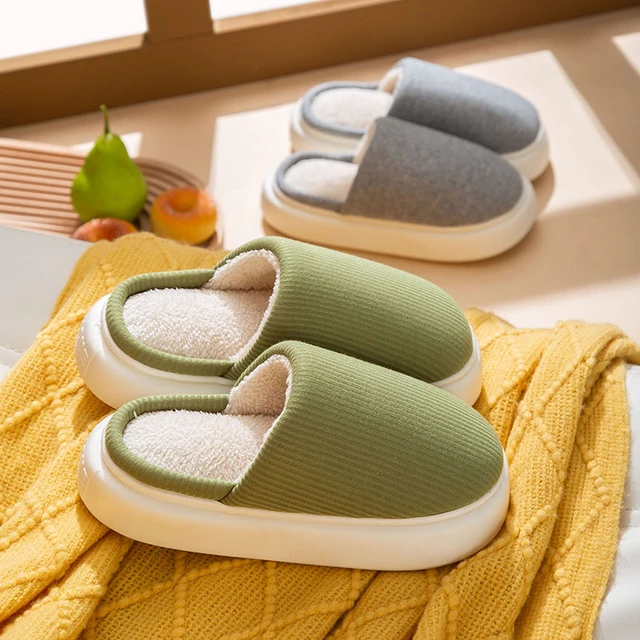
What Are the Best Women’s Winter Slippers?
Introduction:
As winter approaches and temperatures drop, finding the perfect pair of women’s winter slippers can make all the difference in staying warm and comfortable. This comprehensive guide explores the essential features to look for, popular styles, top brands, and practical tips for selecting the best winter slippers for women. Let’s dive into the specifics of what makes a great pair of winter slippers and how you can choose the right ones for your needs.
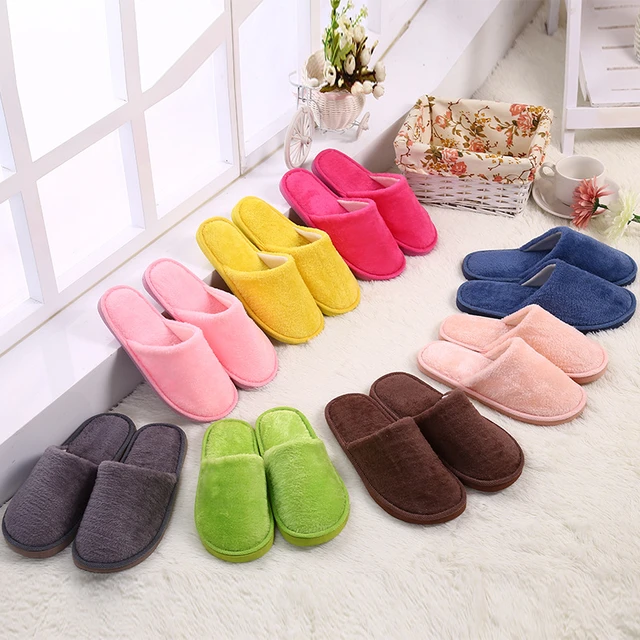
What Are the Best Women’s Winter Slippers?
Importance of Quality Winter Slippers
Understanding why investing in a good pair of winter slippers is crucial sets the foundation for making an informed decision.
Warmth and Comfort: Winter slippers are designed to keep your feet warm and cozy, providing much-needed comfort during the colder months. They often feature insulating materials that trap heat, ensuring your feet stay warm even on the coldest days.
Support and Cushioning: Quality winter slippers offer adequate support and cushioning, which is essential for foot health. Proper arch and heel support can prevent fatigue and alleviate discomfort, especially if you spend a lot of time on your feet.
Durability: Investing in a durable pair of winter slippers ensures they can withstand daily wear and tear. High-quality materials and construction techniques increase the longevity of your slippers, offering better value for your money.
Style and Versatility: Winter slippers come in various styles that can complement your wardrobe. From classic moccasins to trendy booties, you can find a pair that suits your aesthetic while keeping your feet warm.
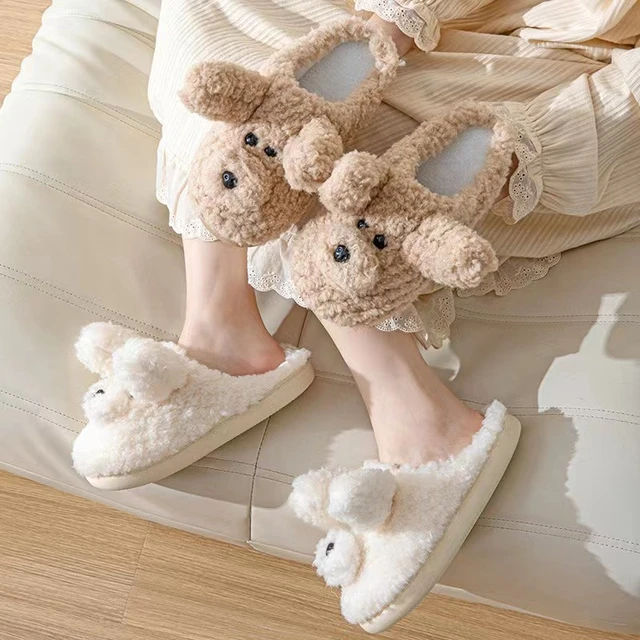
Essential Features to Look For
When selecting winter slippers for women, certain features can enhance their functionality and comfort.
Insulating Materials: One of the most critical aspects of winter slippers is the material used for insulation. Look for materials like sheepskin, wool, fleece, or Thinsulate, which provide excellent heat retention and breathability.
Soft and Plush Linings: A soft, plush lining adds an extra layer of comfort and warmth. Materials like shearling or faux fur can create a luxurious feel, making your slippers cozy and inviting.
Supportive Insoles: Supportive insoles are essential for maintaining foot health and comfort. Memory foam, orthotic inserts, or cushioned insoles can provide the necessary support for your arches and heels.
Durable Outsoles: Winter slippers need durable outsoles that provide traction and stability, especially if you plan on wearing them outdoors. Rubber or TPR (thermoplastic rubber) outsoles are excellent choices for durability and slip resistance.
Adjustable Features: Adjustable features like straps, laces, or elastic gores can help you achieve a secure and customized fit. These elements ensure the slippers stay comfortably on your feet without slipping off.
Easy Maintenance: Consider the ease of cleaning and maintaining your slippers. Some materials are machine washable, while others require hand washing or spot cleaning. Choose a pair that fits your maintenance preferences and lifestyle.
Popular Styles of Women’s Winter Slippers
Different styles of winter slippers cater to various preferences and needs. Here are some popular options to consider.
Moccasin Slippers: Moccasin slippers are a classic choice known for their comfort and timeless style. They often feature a soft, flexible sole and a closed-back design that keeps your feet warm and secure. Moccasins are typically lined with plush materials like shearling or fleece, providing excellent insulation.
Bootie Slippers: Bootie slippers extend above the ankle, offering additional warmth and coverage. They are ideal for extremely cold conditions or for people who prefer extra warmth around their ankles. Booties often come with plush linings and durable outsoles for indoor and occasional outdoor wear.
Slip-On Slippers: Slip-on slippers are easy to put on and take off, making them a convenient option for indoor use. They usually have a low-cut design and can come with open or closed backs. Slip-ons are available in various materials and styles, offering both comfort and versatility.
Scuff Slippers: Scuff slippers, also known as clog slippers, feature an open back and are easy to slide on and off. They provide excellent comfort and warmth for indoor use and are ideal for quick trips around the house. Scuffs are typically lined with soft, insulating materials.
Slipper Socks: Slipper socks combine the warmth of socks with the stability of slippers. They often have a plush lining and non-slip soles, providing comfort and grip on indoor surfaces. Slipper socks are a lightweight and cozy option for lounging at home.
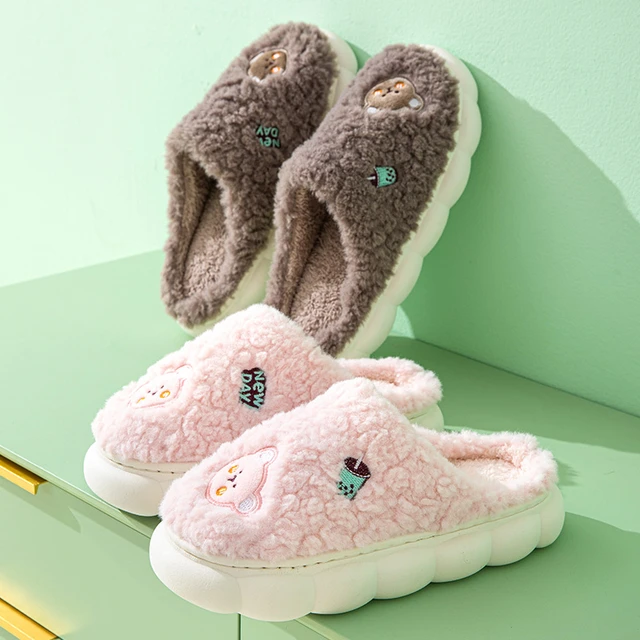
Top Brands for Women’s Winter Slippers
Several brands are known for their high-quality and stylish winter slippers. Here are some top brands to consider.
UGG: UGG is renowned for its luxurious and high-quality footwear, including winter slippers. Known for their sheepskin linings and durable construction, UGG slippers provide exceptional warmth and comfort. Popular models include the UGG Scuffette II and UGG Ansley.
L.L.Bean: L.L.Bean is a trusted brand for outdoor and casual wear, offering a range of durable and comfortable winter slippers. Their Wicked Good Moccasins and Slipper Scuffs are popular choices, known for their plush linings and sturdy construction.
Sorel: Sorel specializes in winter footwear, including stylish and functional slippers. Sorel slippers often feature waterproof materials and rugged outsoles, making them suitable for both indoor and outdoor use. The Sorel Nakiska Slipper is a well-loved model.
Acorn: Acorn is dedicated to providing comfortable and cozy slippers for all seasons. Their winter slippers, such as the Acorn Moc and Acorn Bootie, are known for their soft linings, supportive insoles, and durable outsoles.
Minnetonka: Minnetonka offers a range of moccasin-style slippers known for their craftsmanship and comfort. Their slippers often feature genuine suede or leather uppers with plush linings, providing warmth and style. Popular models include the Minnetonka Cally and Minnetonka Chesney.
Bearpaw: Bearpaw is known for its affordable and stylish winter footwear, including slippers. Bearpaw slippers often feature sheepskin or wool linings, providing excellent insulation and comfort. The Bearpaw Loki and Bearpaw Alyssa are popular choices.
Practical Tips for Selecting the Best Winter Slippers
Choosing the best winter slippers involves considering several practical factors to ensure you find the perfect pair.
Determine Your Needs: Consider your specific needs and preferences when selecting winter slippers. Do you need extra warmth for cold winters, or are you looking for slippers with orthopedic support? Identifying your needs will help narrow down your options.
Consider the Fit: Proper fit is crucial for comfort and warmth. Ensure the slippers fit snugly without being too tight. Adjustable features like laces or straps can help achieve a secure fit, while materials with some stretch can provide added comfort.
Check the Materials: Pay attention to the materials used in the slippers, especially for the lining and upper. Natural materials like sheepskin, wool, and suede provide excellent warmth and breathability, while synthetic materials can offer durability and ease of maintenance.
Think About Indoor vs. Outdoor Use: If you plan to wear your slippers outdoors, look for models with durable, slip-resistant outsoles. Indoor-only slippers can have softer soles but should still provide traction on indoor surfaces to prevent slipping.
Set a Budget: Winter slippers come in various price ranges, so it’s essential to set a budget and find a pair that offers the best value within your price range. High-quality materials and construction tend to cost more but provide better comfort and durability.
Test for Support: Ensure the slippers provide adequate support, especially if you have specific foot health concerns. Orthotic insoles, memory foam cushioning, and arch support can enhance comfort and reduce foot fatigue.
Consider Maintenance: Think about how much maintenance the slippers require. Some materials are easy to clean, while others may need special care. Choose a pair that fits your maintenance preferences and lifestyle.
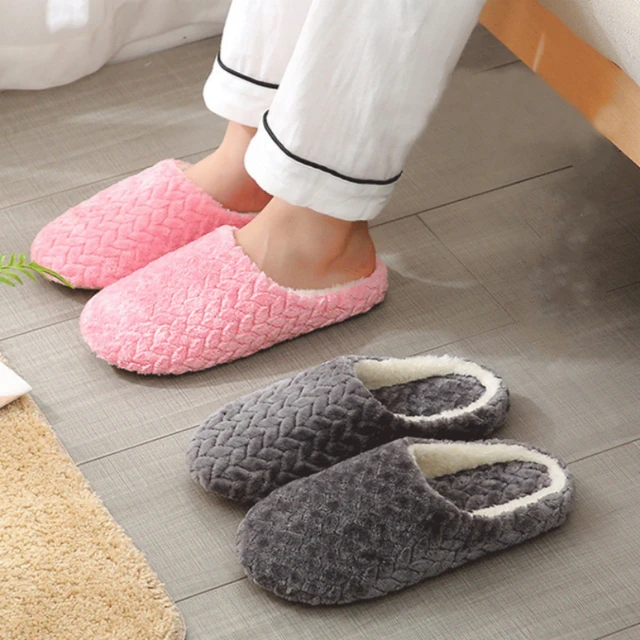
User Insights and Experiences
Learning from other users’ experiences can provide valuable insights into selecting the best winter slippers.
Positive Feedback: Many users emphasize the importance of warmth and comfort in winter slippers. Models with plush linings and durable outsoles often receive positive feedback for their ability to keep feet warm and provide stability.
Fit and Sizing: Users frequently mention the importance of accurate sizing. Trying on slippers or referring to size guides can help ensure a proper fit. Adjustable features like straps or elastic gores can also enhance fit and prevent slipping.
Longevity: Durability is a common theme in user feedback. Slippers made with high-quality materials and sturdy construction tend to last longer, providing better value for money.
Maintenance Tips: Users often share tips for maintaining their slippers, such as cleaning guidelines and protecting the materials. Regular maintenance can prolong the life of the slippers and keep them looking and feeling good.
Comparing Winter Slippers for Different Needs
Comparing different types of winter slippers can help you find the best pair for your specific needs and preferences.
Warmest Slippers:
- UGG Scuffette II: Known for its plush sheepskin lining and durable suede upper, providing excellent warmth.
- L.L.Bean Wicked Good Moccasins: Features a genuine shearling lining and soft suede upper for maximum comfort.
- Sorel Nakiska Slipper: Offers a wool blend lining and suede upper, ideal for cold weather.
Best for Support:
- Acorn Moc: Includes memory foam cushioning and arch support for enhanced comfort and support.
- Vionic Gemma: Features orthotic insoles with arch support, suitable for those with foot health concerns.
- Spenco Supreme Slide: Provides total support with a footbed designed to improve alignment and relieve pressure.
Best for Indoor/Outdoor Use:
- Bearpaw Loki: Durable rubber outsole and sheepskin lining make it suitable for both indoor and light outdoor use.
- Sorel Out ‘N’ About Slippers: Waterproof construction and rugged outsoles make these slippers ideal for indoor and outdoor wear.
- UGG Ansley: Rubber outsole and water-resistant suede upper allow for comfortable indoor and outdoor use.
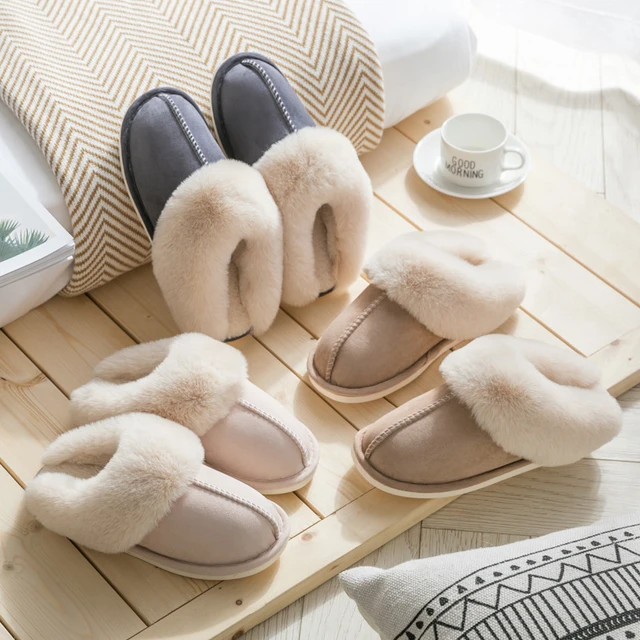
Conclusion
Choosing the best women’s winter slippers involves considering factors such as warmth, comfort, support, and style. By understanding the essential features, exploring popular styles, and considering top brands, you can find the perfect pair to keep your feet cozy and comfortable throughout the winter months. This comprehensive guide provides valuable insights and practical tips to help you make an informed decision, ensuring you invest in high-quality slippers that meet your needs and preferences.
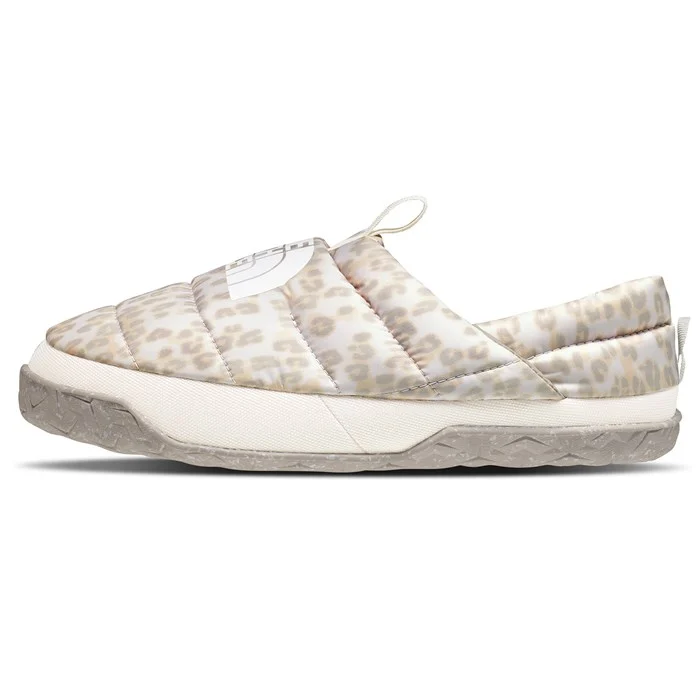
What Makes North Face Slippers for Women Stand Out?
Introduction:
The North Face is a brand synonymous with quality outdoor gear, and their collection of slippers for women is no exception. Designed for comfort, durability, and practicality, North Face slippers cater to a range of needs from indoor coziness to outdoor ruggedness. This comprehensive guide delves into the unique aspects of North Face slippers for women, exploring their features, materials, comfort level, versatility, and overall value.
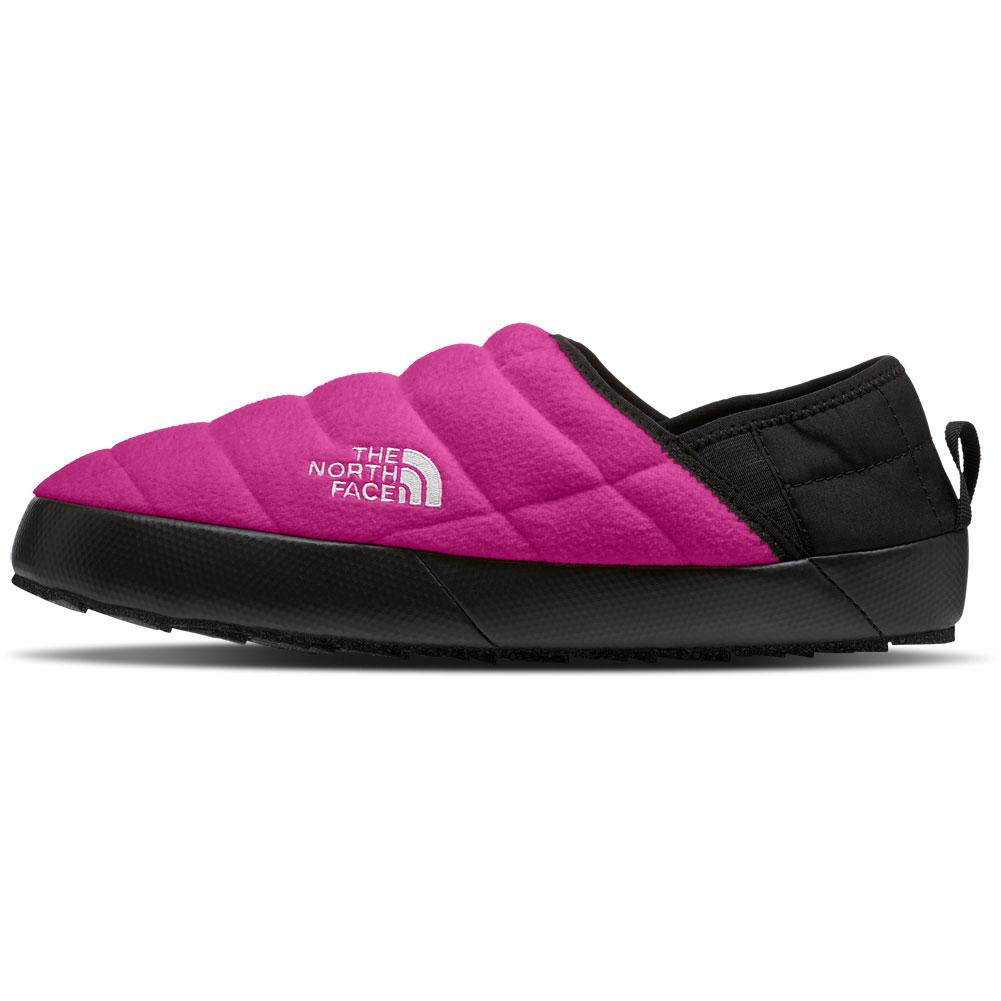
What Makes North Face Slippers for Women Stand Out?
Design and Aesthetic Appeal
North Face slippers for women are designed to be as stylish as they are functional, making them a fashionable choice for any occasion.
Variety of Styles: North Face offers a wide range of slipper styles. From cozy slip-ons to more structured designs, each product caters to different preferences and needs. Popular models include the ThermoBall Traction Mule, the Women’s Tent Mule, and the ThermoBall Eco Traction Bootie. Each style exudes a unique aesthetic while maintaining the brand’s commitment to quality and performance.
Color Options: The brand provides an array of color choices, ranging from classic neutrals like black and gray to more vibrant options like pink and blue. This variety allows women to select slippers that match their personal style and wardrobe.
Attention to Detail: North Face slippers are crafted with attention to detail, featuring durable stitching, high-quality materials, and subtle logos. These elements not only enhance the overall aesthetic but also contribute to the slippers’ long-lasting durability.
Comfort and Fit
One of the most critical factors when selecting slippers is the level of comfort and fit they provide. North Face excels in this area, ensuring that their slippers are both cozy and supportive.
Cushioning and Support: North Face slippers often feature generous cushioning, using materials such as EVA (Ethylene Vinyl Acetate) footbeds and Ortholite insoles. These components provide excellent arch support and comfort, making them ideal for prolonged wear. The plush linings and padded collars further enhance the overall comfort level.
Insulation and Warmth: Especially in their winter models, North Face incorporates insulation technologies like ThermoBall synthetic insulation, which retains heat even in damp conditions. This ensures that feet stay warm and cozy, making them perfect for cold climates or winter use.
Adjustable Fit: Many North Face slippers come with adjustable features such as elastic gussets or drawcords, allowing users to achieve a secure and personalized fit. This adaptability adds to the overall comfort and ensures that the slippers stay securely in place during wear.
Breathability: While warmth is crucial, North Face also prioritizes breathability. Their slippers often include moisture-wicking linings and materials that allow for air circulation, preventing overheating and keeping feet dry and comfortable.
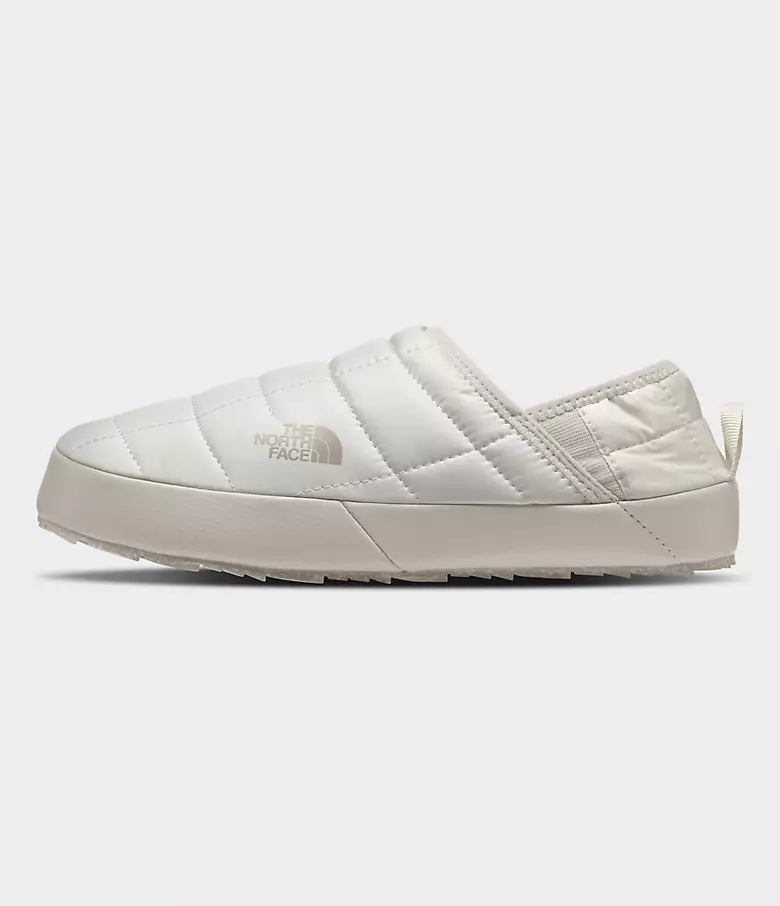
Material Quality and Durability
The materials used in North Face slippers are selected for their durability and performance, ensuring that the slippers can withstand various conditions.
High-Quality Uppers: North Face utilizes durable materials for the slipper uppers, such as water-resistant ripstop nylon or recycled polyester. These materials are designed to handle wear and tear, whether indoors or outdoors. Some models also feature water-repellent finishes to protect against light moisture and stains.
Rugged Outsoles: The outsoles of North Face slippers are crafted for traction and durability. Many slippers feature rubber outsoles with lug patterns that provide excellent grip on different surfaces, including slippery or uneven terrain. This design aspect makes them versatile for both indoor lounging and outdoor activities.
Eco-Friendly Materials: North Face places a significant emphasis on sustainability, incorporating eco-friendly materials wherever possible. For example, their ThermoBall Eco line uses recycled materials for insulation, and the brand often uses responsibly sourced rubber for outsoles. These environmentally conscious choices make North Face slippers a guilt-free purchase.
Easy Maintenance: Due to the high-quality materials and construction, North Face slippers are relatively easy to maintain. The water-resistant properties of the uppers and the durable outsoles mean that most dirt and moisture can be wiped away with minimal effort. This ease of maintenance ensures that the slippers remain fresh and in good condition for longer.
Versatility and Practicality
Indoor Comfort: For indoor comfort, models like the ThermoBall Traction Mule offer plush linings and cushioned insoles that make lounging around the house a luxurious experience. Their slip-on design ensures easy on-and-off convenience, perfect for quick transitions throughout the home.
Outdoor Utility: Models such as the ThermoBall Eco Traction Bootie are built to handle outdoor conditions, featuring durable outsoles and water-resistant uppers. These slippers are ideal for activities like camping or taking a quick trip outside, providing warmth and protection against the elements.
Travel-Friendly: North Face slippers are also great for travel. Their lightweight construction and packability make them easy to take along on trips, ensuring comfort no matter where you go.
Seasonal Adaptability: While some slippers are geared towards winter use with superior insulation, others are designed for year-round comfort. Breathable materials and moisture-wicking linings make certain models suitable for warmer weather, ensuring that North Face slippers can be a staple in your footwear collection throughout the year.
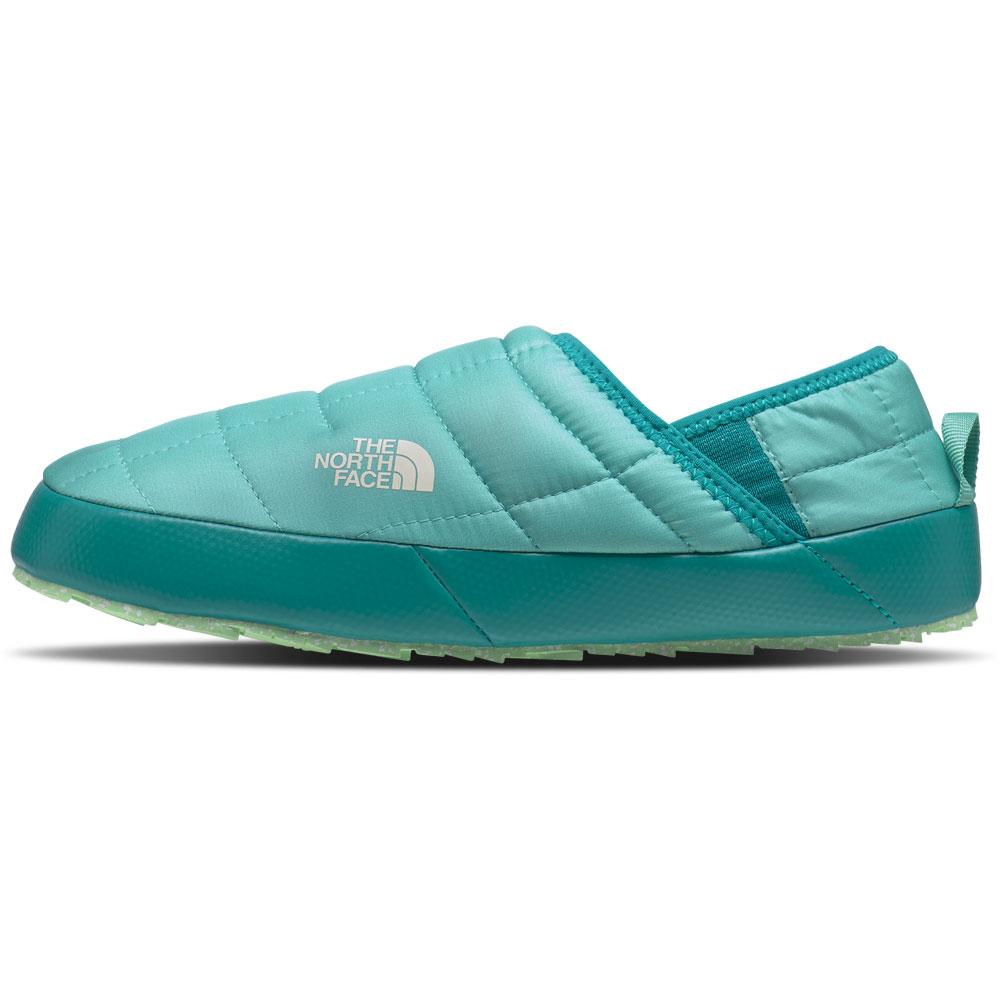
User Reviews and Experiences
Customer reviews and experiences provide valuable insights into the performance and satisfaction levels of North Face slippers for women.
Comfort and Fit: Many users praise the comfort and fit of North Face slippers. Reviews frequently mention the plushness of the linings, the supportive insoles, and the secure, adjustable fit. Users appreciate that they can wear these slippers for extended periods without discomfort.
Warmth and Insulation: Customers also highlight the excellent warmth provided by North Face slippers, particularly those with ThermoBall insulation. Even in cold conditions, users report that their feet stay warm and toasty, affirming the brand’s commitment to thermal performance.
Durability and Quality: The durability of North Face slippers is another common theme in user reviews. Many customers note that their slippers have withstood extensive use, including outdoor wear, without significant wear and tear. This longevity enhances the overall value of the slippers.
Aesthetic Appeal: The stylish design and variety of color options are often lauded by users. Many reviewers are pleased with the look of the slippers, noting that they are fashionable enough to wear both indoors and out.
Considerations: While generally positive, some reviews mention the need to try different sizes to achieve the perfect fit. North Face offers a range of sizes, but as with any footwear, individual preferences and foot shapes can vary. Ensuring the right size is crucial for optimal comfort and satisfaction.
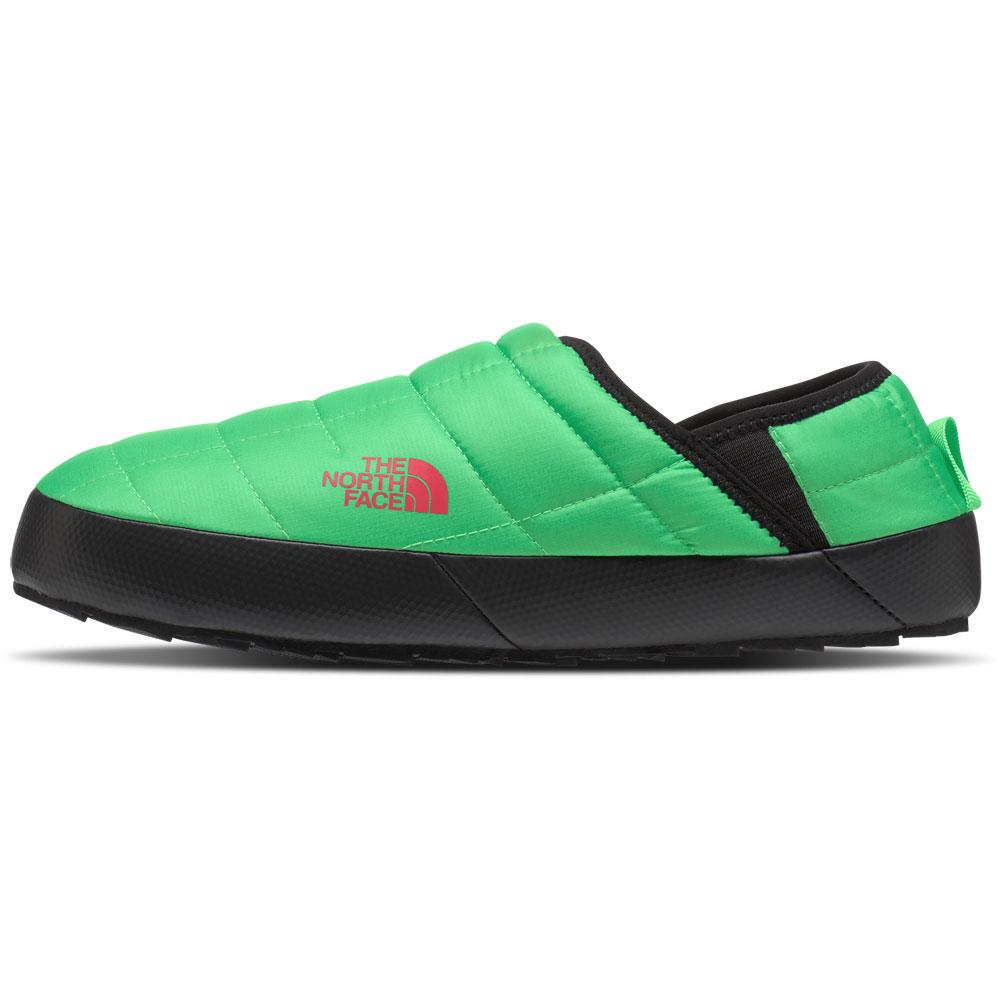
Price and Value for Money
Evaluating the price and overall value for money helps determine whether North Face slippers are a worthwhile investment.
Price Range: North Face slippers for women typically fall in the mid-to-high price range, with prices varying based on the specific model and features. While they may be more expensive than some generic brands, they offer a level of quality and performance that justifies the cost.
Cost vs. Longevity: Considering the durability of the materials and construction, North Face slippers offer good value for money. Their longevity means that users can enjoy the comfort and performance of these slippers for an extended period, making the initial investment worthwhile.
Added Features: Additional features like ThermoBall insulation, water-resistant properties, and eco-friendly materials add to the overall value of North Face slippers. These elements ensure that users get a high-performance product that meets their needs and aligns with sustainable practices.
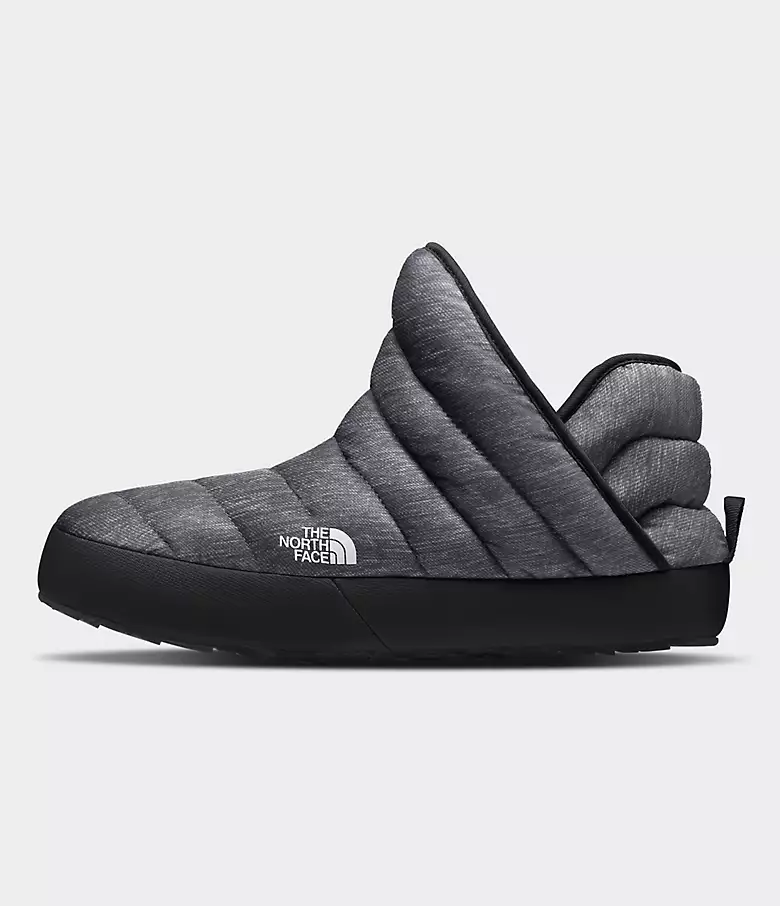
Comparing North Face to Other Brands
To fully appreciate the value and performance of North Face slippers, comparing them to other popular brands provides useful context.
Ugg Slippers: Ugg is another well-known brand in the slipper market, famous for its plush shearling linings and luxurious feel. While Ugg slippers excel in indoor comfort, North Face offers greater versatility and outdoor utility, making them a more practical choice for those who need slippers for both indoor and outdoor use.
Sorel Slippers: Sorel is known for its rugged outdoor footwear, including slippers. Both Sorel and North Face emphasize durability and warmth, but North Face often incorporates more advanced insulation technologies like ThermoBall, providing superior thermal performance in colder conditions.
L.L.Bean Slippers: L.L.Bean offers high-quality slippers that are also geared towards outdoor utility. However, North Face’s commitment to using eco-friendly materials and advanced technologies often gives them an edge in terms of innovation and environmental responsibility.
Conclusion
North Face slippers for women stand out for their blend of comfort, durability, and practicality. Designed with high-quality materials and thoughtful features, they cater to a range of needs from indoor coziness to outdoor adventures. Their stylish designs, superior insulation, and versatile applications make them a valuable addition to any footwear collection. This comprehensive guide highlights the unique aspects of North Face slippers, ensuring that consumers can make an informed decision when looking for the perfect pair. Whether you prioritize warmth, durability, or eco-friendly materials, North Face slippers deliver on all fronts, offering a reliable and fashionable option for women.
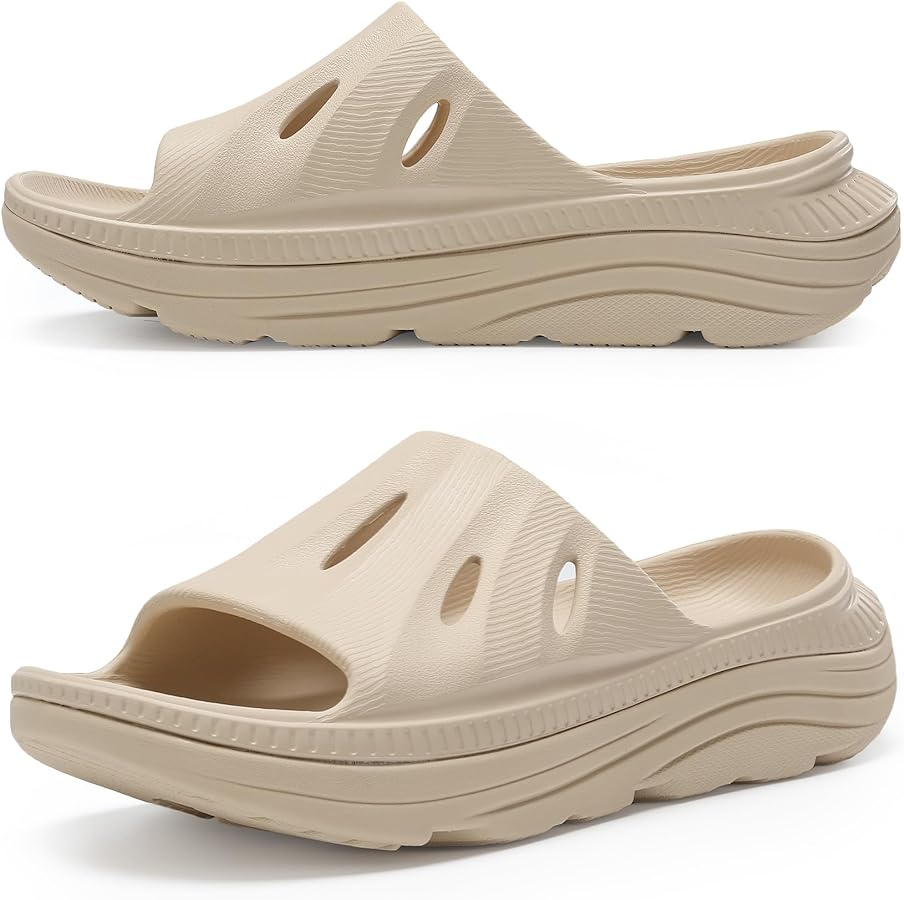
Finding Relief: Slippers for Women with Plantar Fasciitis
Introduction: Understanding Plantar Fasciitis and the Importance of Supportive Slippers
Plantar fasciitis is a common foot condition that causes heel pain due to inflammation of the plantar fascia, a band of tissue that supports the arch of the foot. For women with plantar fasciitis, selecting the right slippers with proper support is crucial to alleviate pain and promote healing. In this comprehensive guide, we will explore the features and benefits of slippers designed specifically for women with plantar fasciitis, helping you find the perfect pair for comfort and relief.
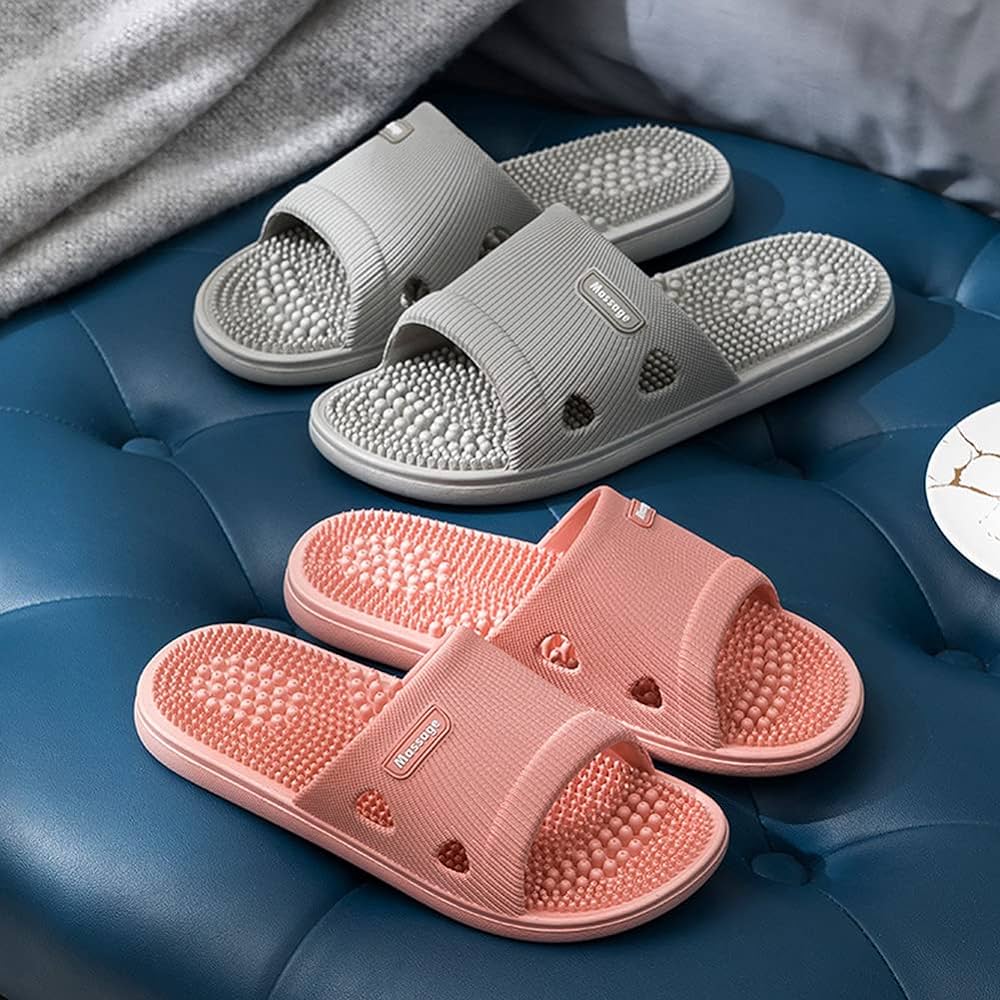
Finding Relief: Slippers for Women with Plantar Fasciitis
Understanding Plantar Fasciitis:
Causes and Symptoms
a. Causes: Plantar fasciitis is often caused by repetitive stress on the plantar fascia, resulting in micro-tears, inflammation, and pain. Factors such as excessive standing, high-impact activities, structural foot abnormalities, or improper footwear can contribute to the development of plantar fasciitis.
b. Common symptoms: Women with plantar fasciitis typically experience sharp or stabbing heel pain, especially in the mornings or after periods of rest. The pain is usually localized to the bottom of the heel or along the arch of the foot.
Essential Features of Slippers for Women with Plantar Fasciitis
a. Arch support: Slippers for plantar fasciitis should prioritize arch support to help alleviate strain on the plantar fascia. Look for slippers with built-in arch support or the ability to accommodate custom orthotic inserts.
b. Cushioning: Adequate cushioning in the heel and forefoot areas helps provide shock absorption and reduces the impact on the fascia during walking or standing.
c. Heel stability: Slippers with a stable and well-cushioned heel counter help stabilize the foot and prevent excessive rolling or pronation that could exacerbate plantar fasciitis symptoms.
d. Removable insoles: The option to replace the slipper’s insoles with custom orthotic inserts allows for personalized support and enhanced comfort.
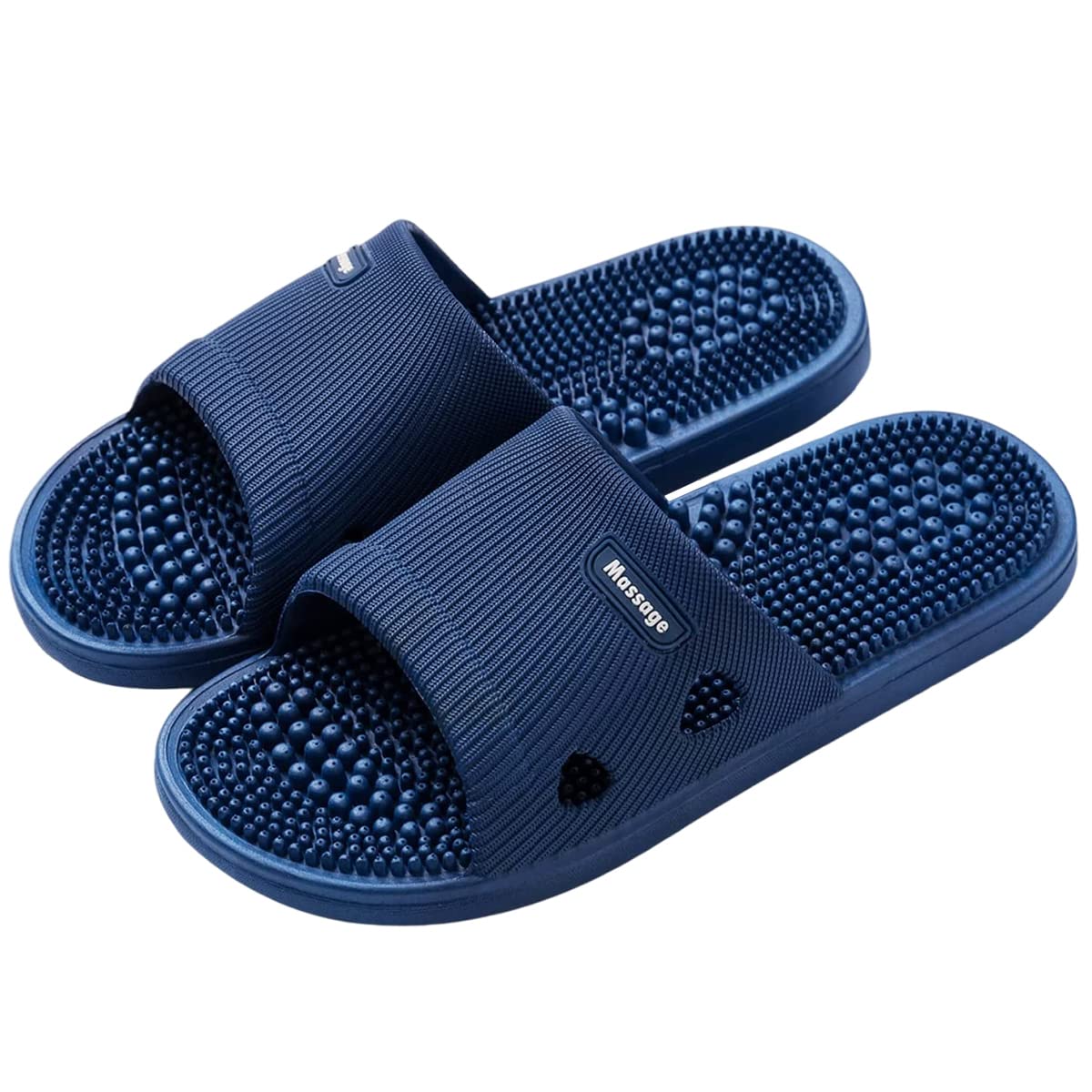
Recommended Brands for Women’s Slippers with Plantar Fasciitis Support
a. Vionic: Vionic offers a wide selection of slippers designed with podiatrist-developed technology and orthotic support. Their slippers provide excellent arch support and cushioning for women with plantar fasciitis.
b. OOFOS: OOFOS specializes in recovery footwear with unique OOfoam technology that absorbs impact, supports the arch, and relieves pressure on the plantar fascia. Their slippers provide unparalleled comfort for women with plantar fasciitis.
c. Orthofeet: Orthofeet designs slippers with biomechanical arch support and cushioning to alleviate plantar fasciitis symptoms. Their slippers are known for their exceptional comfort and proper foot support.
d. Haflinger: Haflinger slippers are crafted with natural materials and feature anatomically shaped footbeds that provide arch support. Their slippers offer a balance of comfort and support for women with plantar fasciitis.
Choosing the Right Slipper Style
a. Slide-on slippers: Slide-on slippers are convenient for easy on-and-off wear. Look for styles with adjustable straps or closures to ensure a secure and customized fit.
b. Closed-toe slippers: Closed-toe slippers offer additional coverage and warmth. Choose models with supportive features like arch support and cushioning to promote pain relief.
c. Orthotic-friendly slippers: Some slipper brands offer models specifically designed to accommodate custom orthotics. These slippers provide the flexibility to personalize the support according to individual needs.
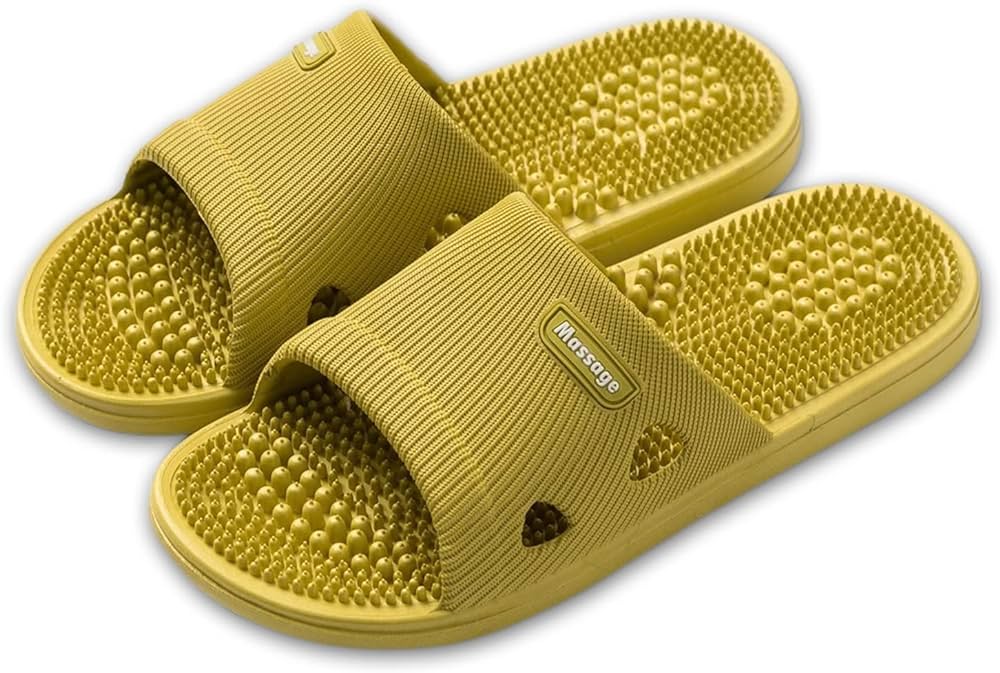
Evaluating Comfort, Fit, and Sizing
a. Comfort considerations: Look for slippers with soft, breathable materials, such as fleece or moisture-wicking fabrics, to provide comfort and prevent irritation. Consider features like padded collars or memory foam insoles for additional cushioning.
b. Sizing accuracy: Pay attention to the sizing recommendations provided by each slipper brand, as they may vary. Consider any factors specific to your feet, such as bunions or wide feet, when selecting the appropriate size.
c. Customizable adjustments: Slippers with adjustable closures or straps allow for a more customized fit to accommodate varying foot widths and instep heights.
d. Trial and return policies: Since everyone’s foot shape and comfort preferences differ, it is important to choose a brand that offers trial periods or hassle-free return policies. This gives you the opportunity to explore the slippers’ comfort and support before committing to a purchase.
Maintaining and Caring for Slippers
a. Follow manufacturer instructions: Each slipper brand may have specific care instructions, so it is important to follow them to maintain the performance and longevity of your slippers.
b. Spot clean when necessary: Promptly clean any stains or dirt spots on your slippers with a damp cloth. Avoid immersing them in water unless instructed by the manufacturer.
c. Air drying: Allow your slippers to air dry naturally. Avoid using direct heat sources, as they can damage the materials or cause shrinkage.
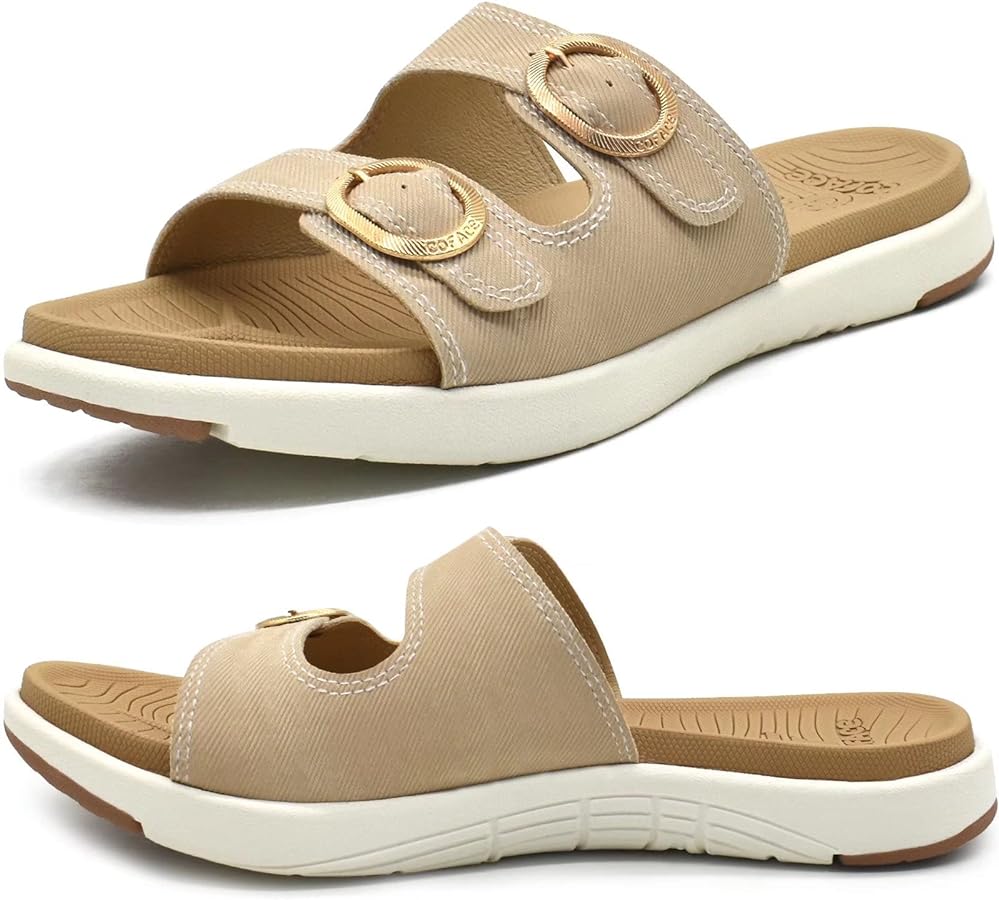
Incorporating Foot Stretches and Exercises
a. Calf stretches: Tight calf muscles can contribute to plantar fasciitis pain. Perform calf stretches by standing near a wall, placing one foot forward and bending the knee, while keeping the other leg straight behind you. Lean forward against the wall, feeling a stretch in the calf of the straight leg. Hold for 30 seconds and repeat on both sides.
b. Toe stretches: Loosening the muscles in the toes and feet can provide relief. Sit in a chair and cross one leg over the other. Use your hand to gently stretch each toe back and forth, helping to alleviate tension in the plantar fascia.
c. Towel curls: Place a towel on the floor and use your toes to grip and scrunch it toward you. Repeat this exercise for 10-15 repetitions to strengthen the muscles in the feet and stimulate blood flow.
d. Plantar fascia stretch: Sit in a chair and cross one leg over the other. Using your hand, pull the toes of the crossed leg back towards you until you feel a stretch in the arch of your foot. Hold for 30 seconds and repeat on the other side.
Consultation with a Podiatrist
a. Seeking professional advice: If your plantar fasciitis symptoms persist or worsen despite using supportive slippers and incorporating exercises, it may be beneficial to consult a podiatrist. They can provide a detailed assessment, recommend specific treatments, and suggest additional measures to manage your condition effectively.
b. Custom orthotics: In some cases, custom orthotic inserts may be necessary to address individual foot abnormalities and provide tailored support for the plantar fascia. A podiatrist can evaluate your specific needs and create custom orthotics to alleviate symptoms.
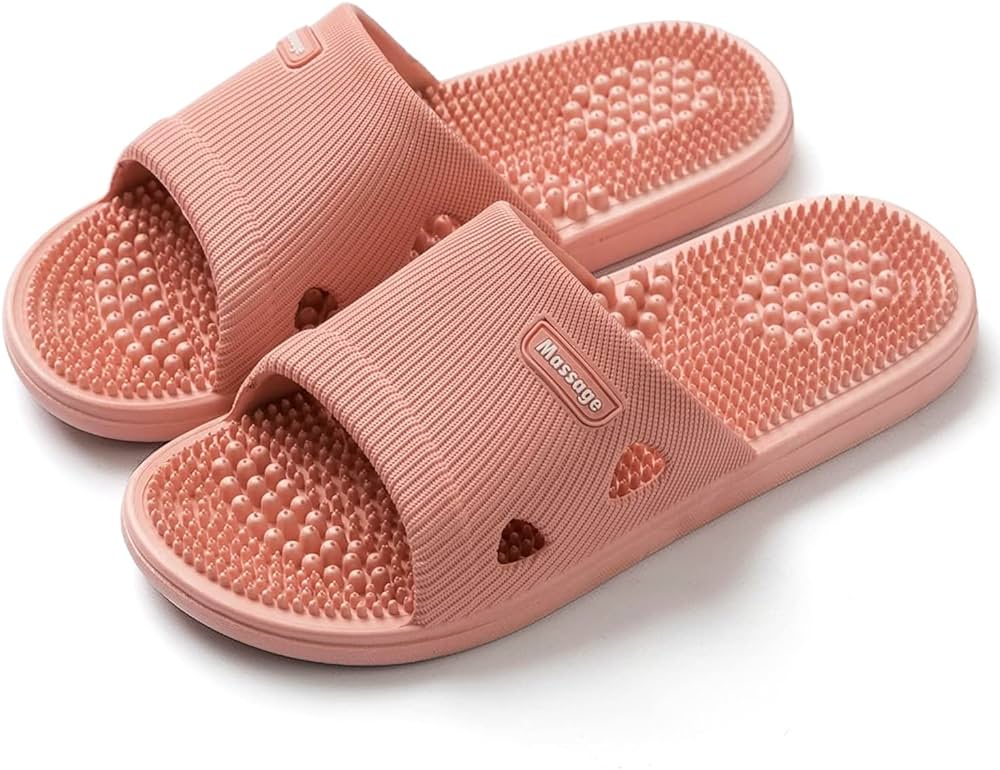
Conclusion:
Optimal Support for Plantar Fasciitis Relief
Choosing the right slippers for women with plantar fasciitis can significantly alleviate symptoms and contribute to overall foot comfort. Consider features such as arch support, cushioning, stability, and customizable options when selecting slippers to support your plantar fascia.
Look for recommended brands like Vionic, OOFOS, Orthofeet, and Haflinger that prioritize foot health and offer a range of styles suitable for individuals with plantar fasciitis.
By prioritizing support and comfort in your choice of slippers, you can find much-needed relief from plantar fasciitis and enjoy walking or lounging at home with reduced discomfort. Take proactive steps towards foot health and choose slippers that provide optimal support for your plantar fascia.
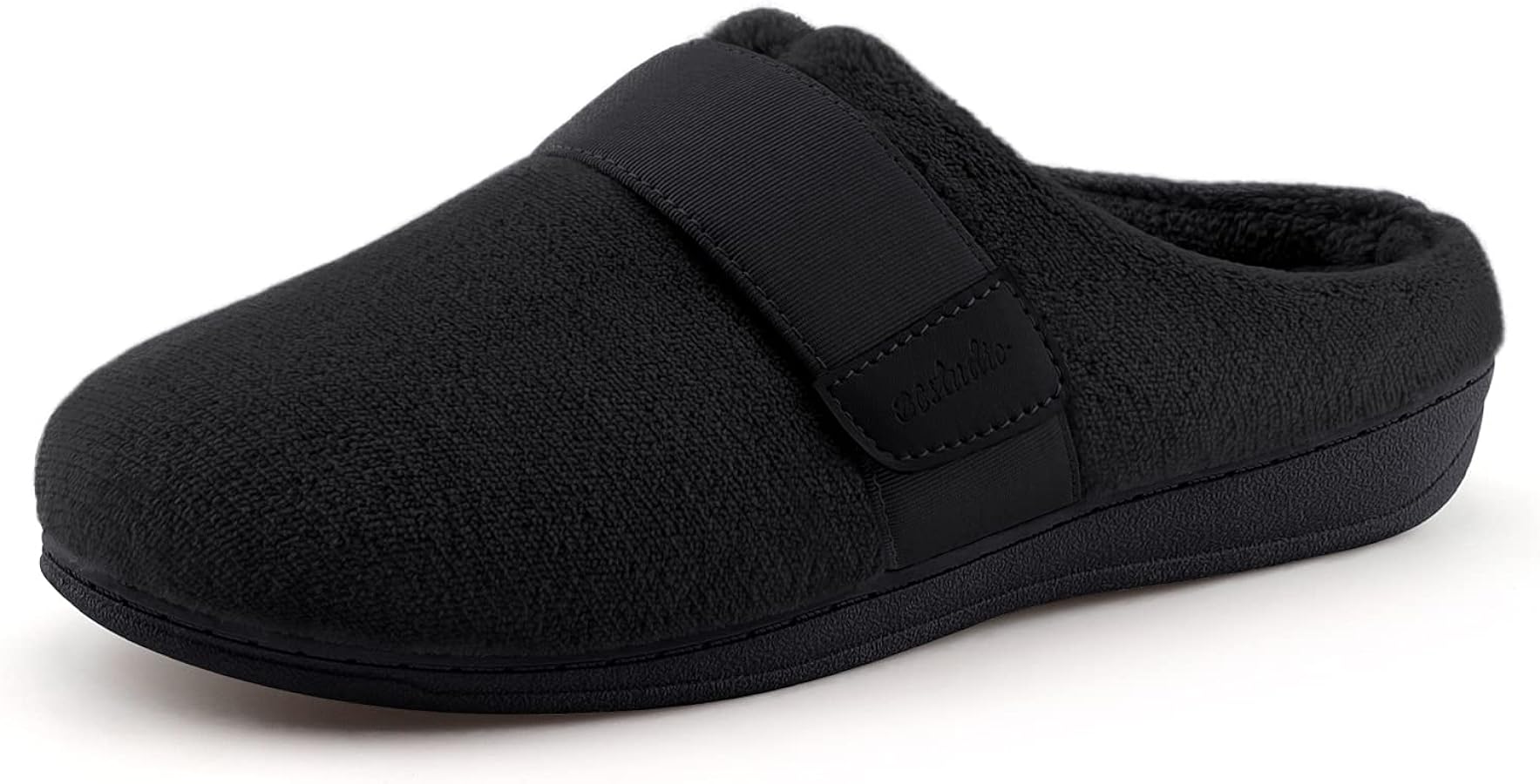
Finding the Perfect Women’s House Slippers with Arch Support
Introduction: The Importance of Arch Support in House Slippers
When it comes to selecting house slippers, comfort and support are key factors to consider. Women often spend a significant amount of time indoors, and having proper arch support in their slippers can help prevent foot fatigue, promote proper alignment, and provide overall comfort. In this comprehensive guide, we will explore the benefits of women’s house slippers with arch support and provide specific recommendations to help you find the perfect pair.
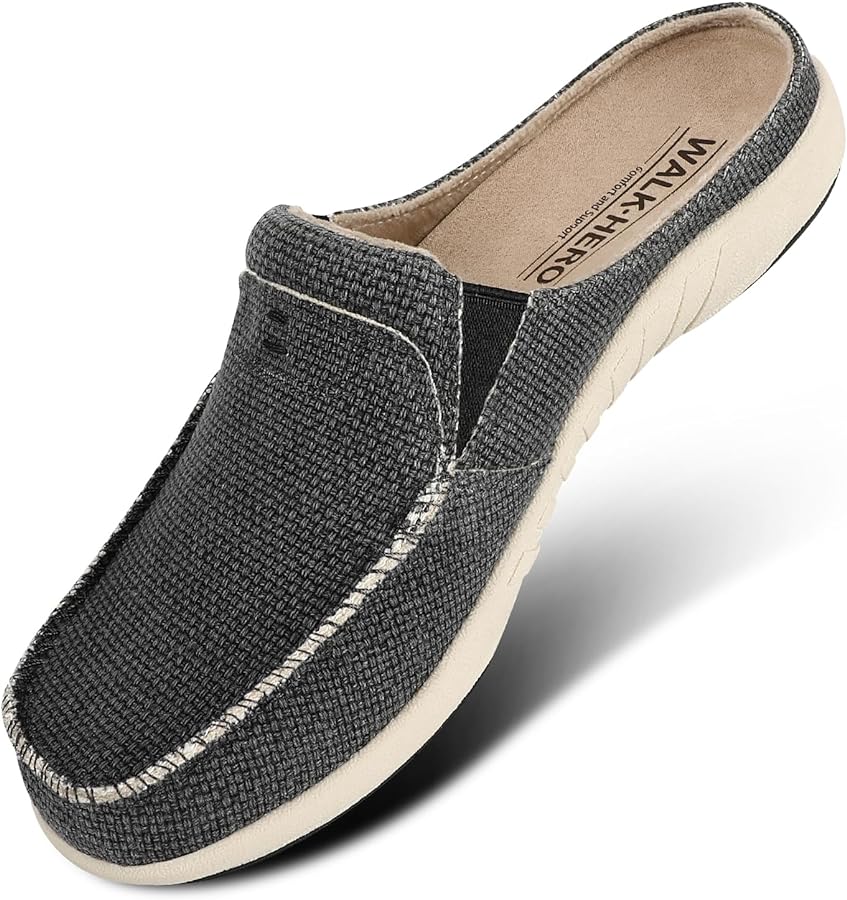
Comfort and Support: Finding the Perfect Women’s House Slippers with Arch Support
Understanding the Importance of Arch Support
a. Foot anatomy: The arches of the feet act as natural shock absorbers, supporting the body’s weight and maintaining balance. Insufficient support can lead to conditions like plantar fasciitis or flat feet, causing discomfort and pain.
b. Arch support benefits: House slippers with arch support provide stability, help distribute weight evenly across the feet, and promote proper alignment of the ankles, knees, and hips. This can alleviate foot pain, reduce fatigue, and improve overall posture.
Choosing the Right House Slipper Style
a. Slip-on slippers: These slippers are easy to slide on and off, making them convenient for quick use around the house. Look for slip-on styles with built-in arch support or the ability to accommodate orthotic inserts.
b. Moccasin slippers: Moccasin-style slippers offer both comfort and a cozy feel. Opt for those with memory foam or contoured insoles that provide arch support and cushioning.
c. Bootie slippers: Bootie-style slippers provide additional warmth and coverage, making them ideal for colder climates. Look for options with arch support features, such as a built-in footbed or removable insoles.
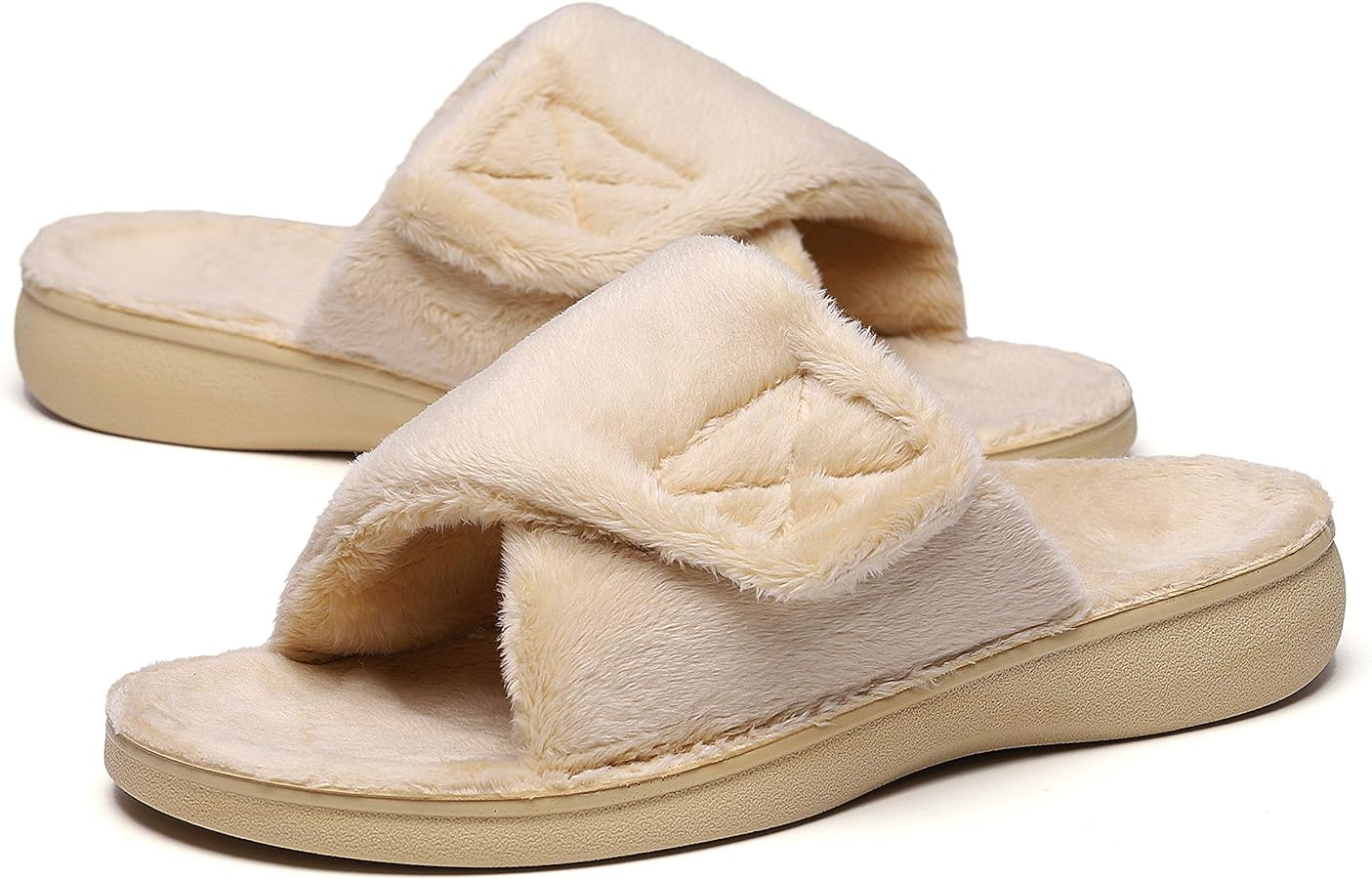
Evaluating Arch Support Features
a. Contoured footbeds: Look for house slippers with contoured footbeds that follow the natural shape of the foot and provide arch support. These footbeds help distribute weight evenly and alleviate pressure on the arches.
b. Cushioned insoles: House slippers with cushioned insoles offer an extra layer of comfort and can provide arch support through various technologies like memory foam, gel inserts, or EVA foam.
c. Firm heel cups: Slippers with firm heel cups help stabilize the foot and offer additional support to the arches. These cups prevent excessive foot rolling and enhance overall stability.
d. Removable insoles: Some slippers are designed with removable insoles, allowing you to replace them with custom orthotic inserts, if needed. This customization option ensures optimal arch support tailored to your specific foot structure.
Recommended Brands for Women’s House Slippers with Arch Support
a. Vionic: Vionic is renowned for its focus on foot health and comfort. Their house slipper collection features Orthaheel technology, providing excellent arch support and cushioning.
b. Sorel: Sorel offers a range of stylish house slippers with arch support. Their slippers often incorporate EVA footbeds or foam cushioning for enhanced comfort.
c. Haflinger: Haflinger house slippers combine natural materials with anatomically shaped footbeds that support the arches. They offer durable options made from felt or wool.
d. Acorn: Acorn slippers feature supportive memory foam insoles and contoured footbeds for maximum comfort and arch support. They offer a wide range of styles, including slip-ons and booties.
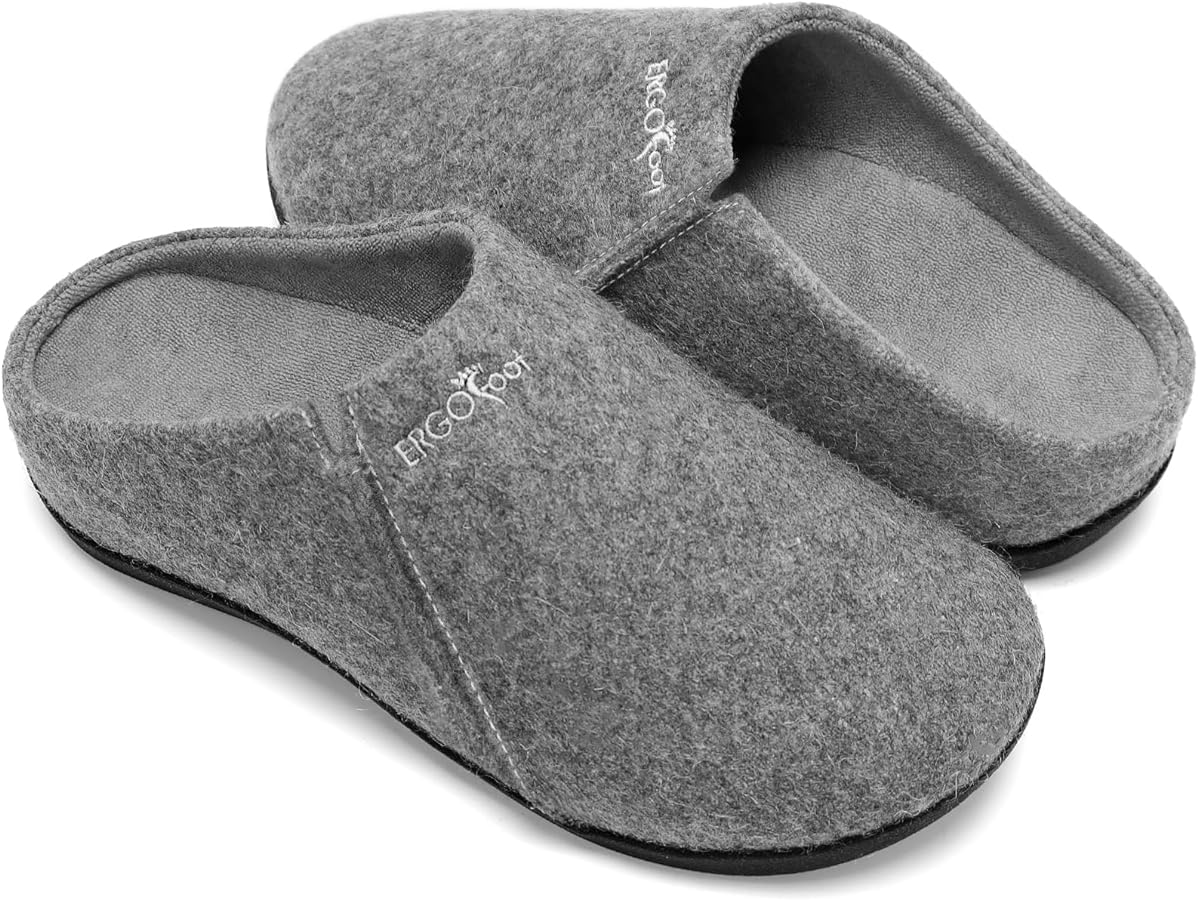
Finding the Proper Fit and Comfort
a. Sizing considerations: Pay attention to the sizing guidelines provided by the slipper manufacturer. Consider any specific foot concerns, such as bunions or wide feet, when making size selections.
b. Adjustable features: Look for house slippers with adjustable closures like Velcro straps or elastic bands. Adjustable features allow for a customized fit and accommodate different foot shapes.
c. Breathable materials: Opt for slippers made from breathable materials like cotton or wool, as they help regulate foot temperature and prevent excessive sweating.
d. Non-slip soles: Ensure that the house slippers have non-slip soles to provide stability and reduce the risk of slips and falls on different surfaces.
Proper Care and Maintenance
a. Follow manufacturer instructions: Each brand may have specific care instructions, so it’s essential to follow them to preserve the performance and longevity of your house slippers.
b. Spot clean when necessary: Promptly clean any stains or dirt spots on your slippers with a damp cloth or sponge. Avoid immersing them in water unless instructed by the manufacturer.
c. Allow slippers to air dry: After cleaning, let your slippers air dry naturally. Avoid using direct heat sources, which can damage the materials or cause shrinkage.
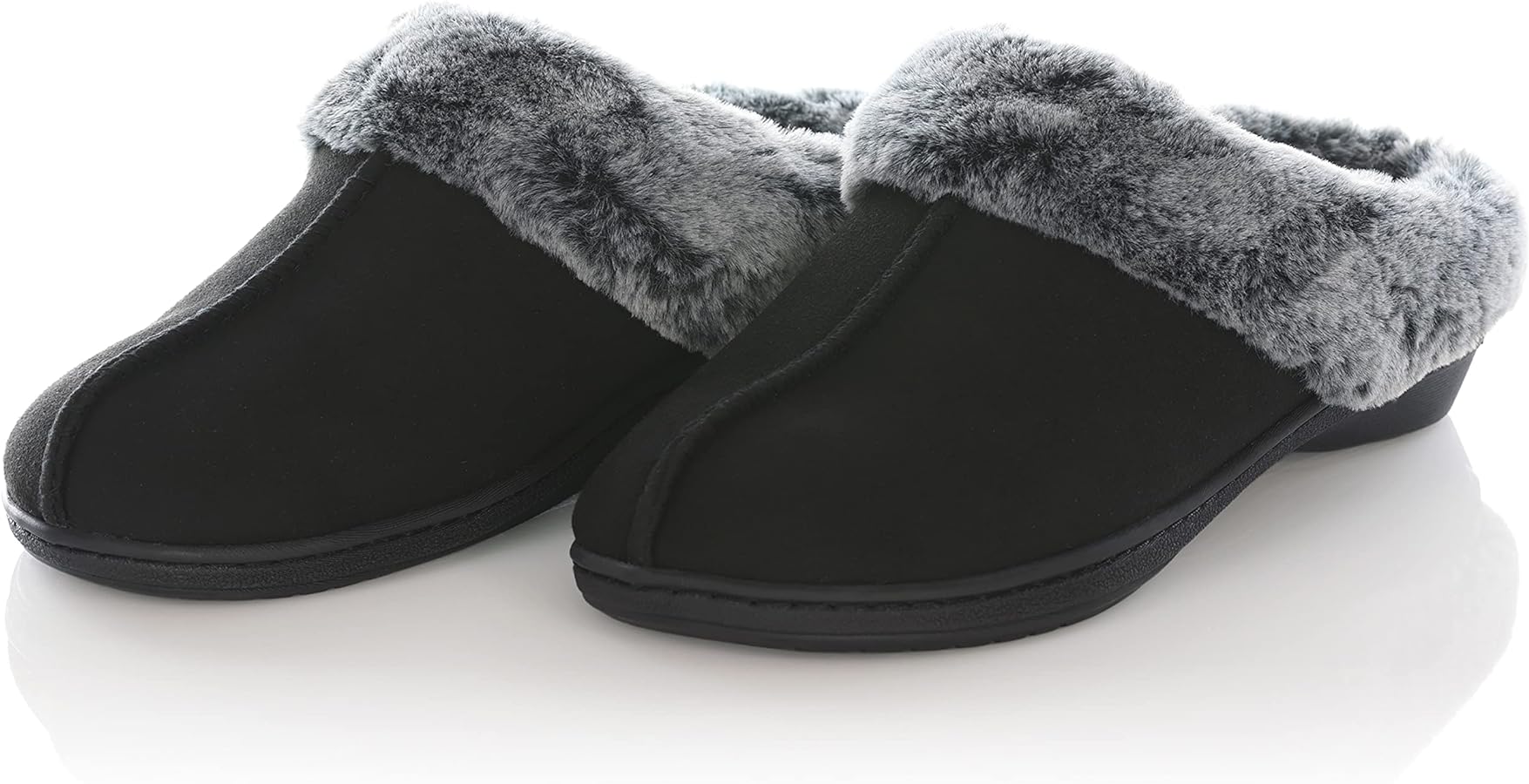
Beyond House Slippers:
Extending Arch Support to Outdoor Footwear
a. Outdoor shoe selection: Extend the benefits of arch support beyond house slippers by selecting outdoor footwear that also offers proper arch support. Look for brands that prioritize foot health and offer a range of styles, such as sneakers, hiking boots, or casual shoes.
b. Custom orthotics: If you require additional arch support, consider consulting with a podiatrist or foot specialist who can assess your foot structure and recommend custom orthotics. Custom orthotics can be used in both indoor and outdoor footwear to provide tailored arch support.
c. Regular foot exercises: To complement the support provided by house slippers and outdoor footwear, incorporate foot exercises into your daily routine. Strengthening exercises like toe curls, arch lifts, and ankle rotations can help maintain foot health and enhance the benefits of arch support.
Benefits of Arch Support in Daily Life
a. Improved posture: Proper arch support contributes to proper alignment of the body, including the ankles, knees, and hips. This can positively impact overall posture and reduce strain on the muscles and joints.
b. Enhanced comfort: Arch support reduces the stress on the arches of the feet, resulting in enhanced comfort during daily activities. Whether you’re standing, walking, or engaging in household tasks, the right arch support promotes better foot alignment and reduces discomfort.
c. Alleviation of foot pain: For individuals experiencing foot pain conditions like plantar fasciitis or flat feet, arch support can provide much-needed relief. The support helps reduce strain on the affected areas and promotes proper foot mechanics, alleviating pain and discomfort.
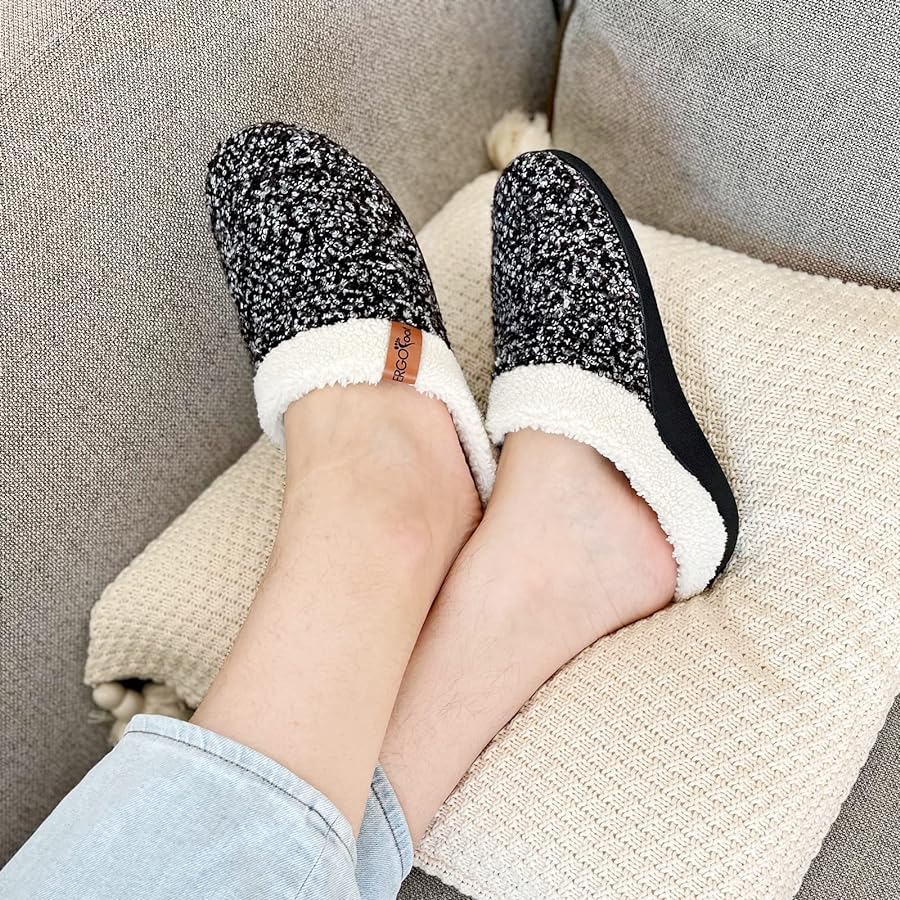
Conclusion:
Comfort and Support for Every Step at Home
Investing in women’s house slippers with arch support ensures optimal comfort, proper alignment, and reduced foot fatigue while at home. Remember to evaluate arch support features, choose a slipper style that aligns with your preferences, and consider recommended brands known for their focus on foot health.
Finding the perfect pair of house slippers with arch support enhances your indoor comfort, promotes healthy foot mechanics, and provides long-lasting support for each step you take at home. Prioritize your foot well-being and enjoy ultimate comfort throughout your day-to-day activities within the comfort of your own home.
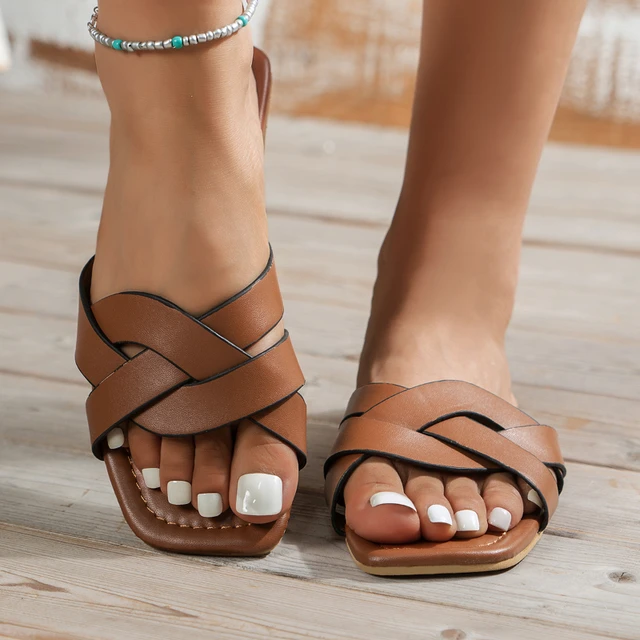
Luxurious Comfort: Women’s Leather Slippers for Relaxation
Introduction: Embracing Coziness and Style
Nothing compares to the indulgent comfort and timeless appeal of women’s leather slippers. Crafted from premium materials and designed with elegance and comfort in mind, these slippers offer a luxurious experience for your feet. In this detailed guide, we will explore the world of women’s leather slippers. From the softness and durability of leather to different styles and features, you’ll discover the perfect pair that combines style, relaxation, and unparalleled comfort.
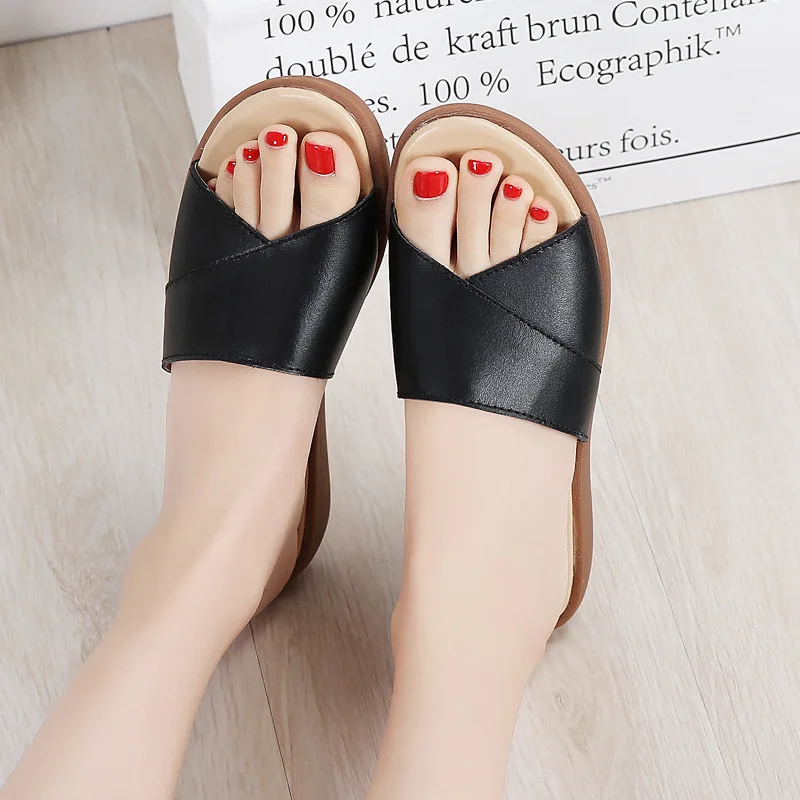
Luxurious Comfort: Women’s Leather Slippers for Ultimate Relaxation
-
The Allure of Leather: Softness and Longevity
a. Quality leather: Women’s leather slippers are made from genuine leather, renowned for its softness and durability. Look for slippers crafted from premium leathers such as supple sheepskin or luxurious calfskin. These materials offer natural breathability and excellent temperature regulation for year-round comfort.
b. Support and flexibility: Leather slippers conform to the shape of your feet over time, providing a customized fit and excellent support. The flexibility of leather allows for natural movement, reducing foot fatigue and increasing overall comfort.
c. Moisture-wicking properties: Genuine leather possesses inherent moisture-wicking properties, effectively absorbing and dissipating sweat from your feet. This feature helps to keep your feet dry and odor-free, promoting enhanced comfort and foot health.
d. Longevity: With proper care, women’s leather slippers can last for years, maintaining their softness, shape, and luxurious feel. Leather has a remarkable ability to resist wear and tear, ensuring your beloved slippers stay with you through countless cozy moments.
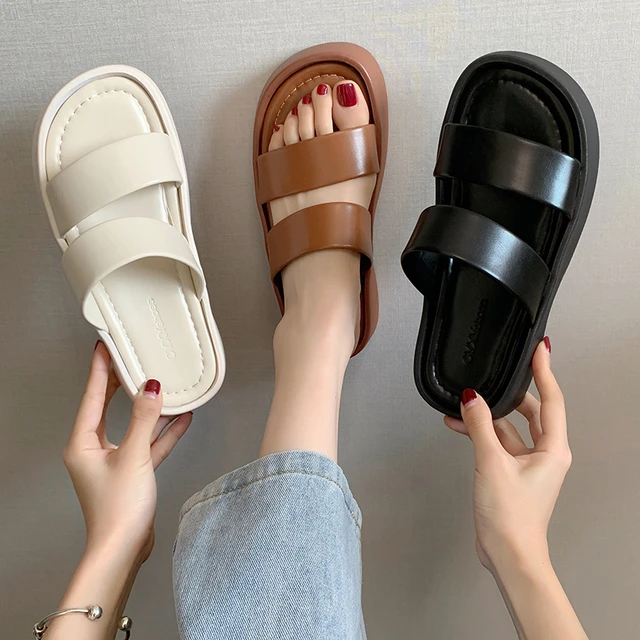
-
Slipper Styles: Finding Your Perfect Match
a. Moccasin-style slippers: Moccasin-style women’s leather slippers feature a flexible sole and a classic design reminiscent of Native American footwear. They often have a soft and supple leather upper with a suede or rubber sole for added traction.
b. Loafer-style slippers: Loafer-style slippers offer a more sophisticated and refined look. These slippers resemble traditional loafers but are crafted with soft and pliable leather. They typically feature a low heel and a comfortable, slip-on design.
c. Slip-on slippers: Slip-on slippers are a versatile and convenient choice. They often have an open-back design and are easy to slide on and off, providing comfort and ease for everyday wear around the house.
d. Bootie-style slippers: For those seeking additional warmth and coverage, bootie-style slippers are an excellent option. These slippers extend higher up the ankle, resembling miniature boots, and provide extra coziness on colder days.
-
Comfort Features: Luxurious Details and Treatments
a. Soft linings: Look for women’s leather slippers with plush and cozy linings. Options include genuine sheepskin, synthetic fur, or microfiber linings, which provide additional warmth and a luxurious feel against your skin.
b. Cushioned insoles: Check for slippers with cushioned insoles that provide superior comfort for your feet. Memory foam or latex insoles offer responsive support and mold to the shape of your feet for a personalized fit.
c. Arch support: Some women’s leather slippers feature built-in arch support, which cradles the arches of your feet and provides stability. This feature helps reduce foot fatigue and provides added cushioning for all-day comfort.
d. Anti-slip soles: Look for slippers with anti-slip or textured soles made from materials such as rubber or thermoplastic rubber (TPR). These soles offer excellent grip and traction, ensuring stability and safety as you move around your home.
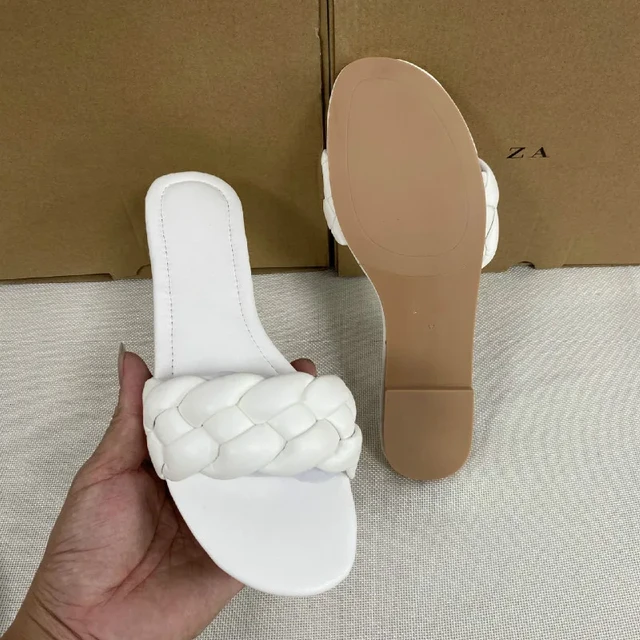
-
Style and Elegance: Infusing Panache into Everyday Comfort
a. Color choices: Women’s leather slippers come in a range of colors to suit different preferences and styles. From classic neutrals like black, brown, and tan to vibrant hues like red or blue, you can select a color that expresses your personality.
b. Embellishments and details: Some women’s leather slippers feature decorative elements such as bows, embroidery, or stitching details. These embellishments add a touch of elegance and individuality to your slippers.
c. Versatile designs: Leather slippers effortlessly transition from the bedroom to the living room. Choose a versatile design that complements both loungewear and casual outfits, allowing you to enjoy both comfort and style.
d. Outdoor usability: Look for women’s leather slippers with durable soles that offer sufficient grip for light outdoor use. These slippers provide the convenience and comfort of indoor footwear while allowing you to step outside without changing shoes.
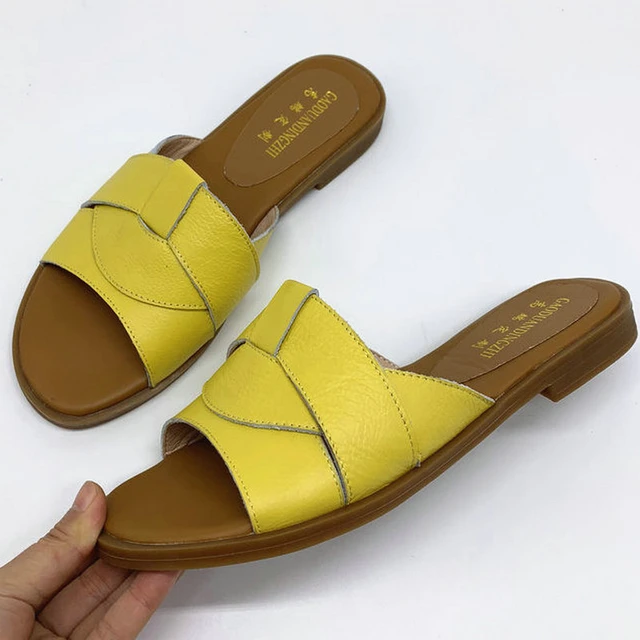
-
Care and Maintenance: Preserving the Beauty of Leather Slippers
a. Regular cleaning: To keep your women’s leather slippers looking their best, regularly remove dirt and dust by gently brushing or wiping them with a soft cloth. For more stubborn stains, use a damp cloth and mild leather cleaner specifically formulated for use on leather footwear.
b. Conditioning the leather: Over time, leather may dry out and lose its natural oils. To prevent this, apply a leather conditioner or moisturizer to your slippers. This will help keep the leather soft, supple, and resistant to cracking or peeling.
c. Storage considerations: When not in use, store your women’s leather slippers in a cool, dry place away from direct sunlight. Avoid storing them in plastic bags or airtight containers, as this can trap moisture and cause the leather to deteriorate.
d. Seasonal care: During humid seasons or in areas with high humidity, you may want to use a leather protectant spray on your slippers to guard against moisture and prevent mold or mildew growth. Follow the instructions on the product for effective application.
-
Sizing and Fit: Ensuring the Perfect Comfortable Fit
a. Accurate sizing: Proper fit is essential for optimal comfort. Refer to the manufacturer’s sizing guide, and measure your feet to select the correct size. Keep in mind that leather slippers may initially feel snug, but the material will gradually stretch and mold to the shape of your feet.
b. Consider foot width: In addition to length, consider the width of your feet when selecting leather slippers. Some brands offer different width options to accommodate various foot shapes. If you have wider feet, opt for slippers with a more generous fit to avoid discomfort.
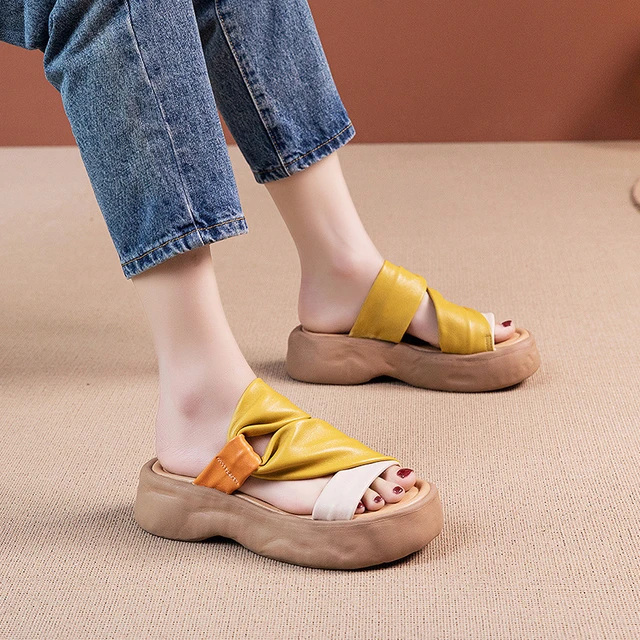
Conclusion: A Luxurious Journey in Women’s Leather Slippers
Indulge your feet in the ultimate comfort and style of women’s leather slippers. Made from premium materials and designed to perfection, these slippers offer a luxurious experience that elevates relaxation at home.
With the softness and longevity of genuine leather, various styles to suit your preferences, and comfort features such as cushioned insoles and anti-slip soles, you can find the perfect pair of slippers to envelop your feet in pure comfort.
Express your personal style through colors, embellishments, and versatile designs, and enjoy the convenience of outdoor usability. Women’s leather slippers are not just footwear; they are a gateway to unparalleled coziness, elegance, and everyday luxury.
Experience the embrace of women’s leather slippers, and let them accompany you on a journey of relaxation and indulgence, one cozy step at a time.

